TRINIDAD AND TOBAGO SPILL
CARBON FOOTPRINT OF SPILL RESPONSE
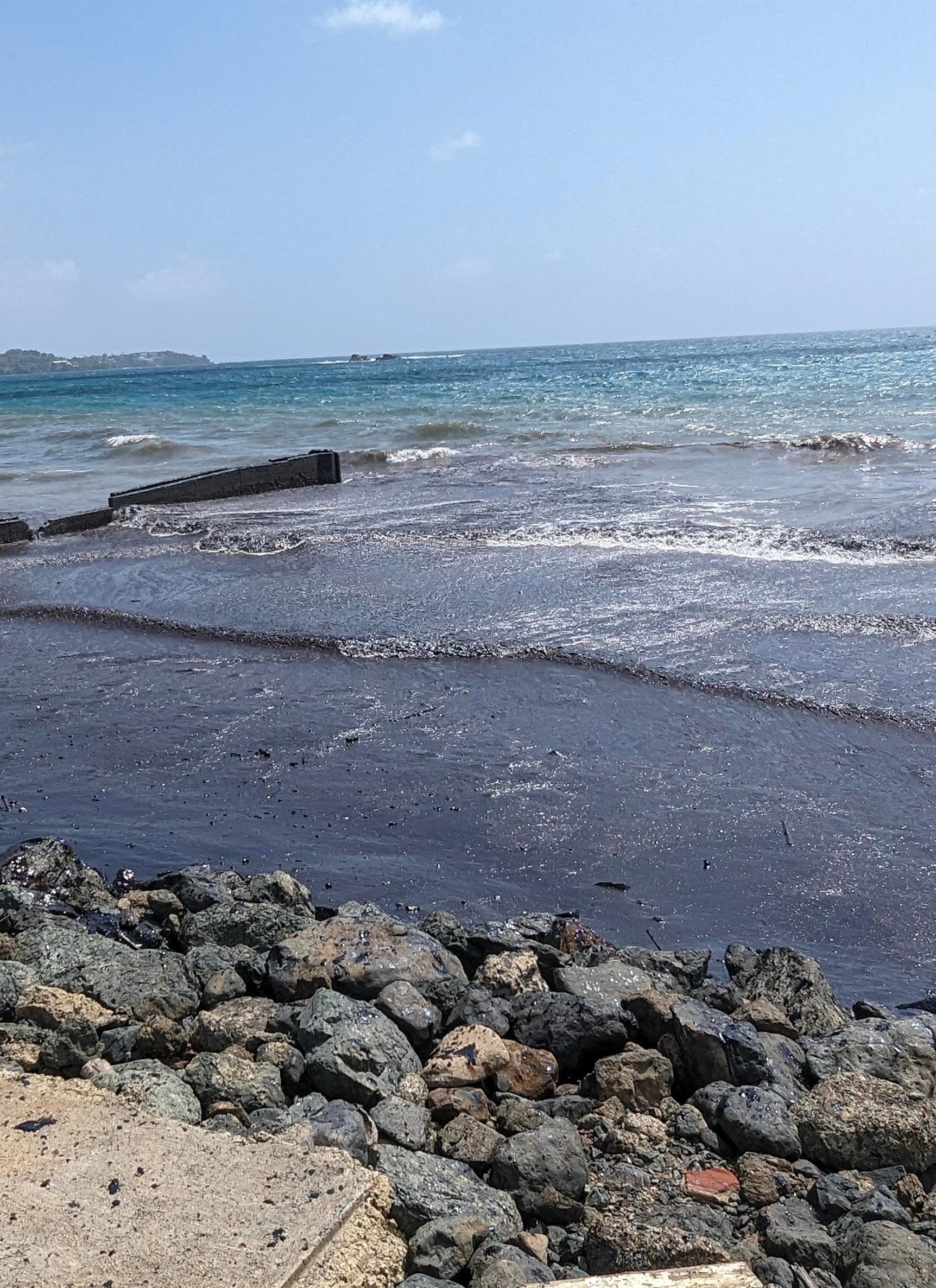
EV’S VS HYDROCARBON VEHICLES
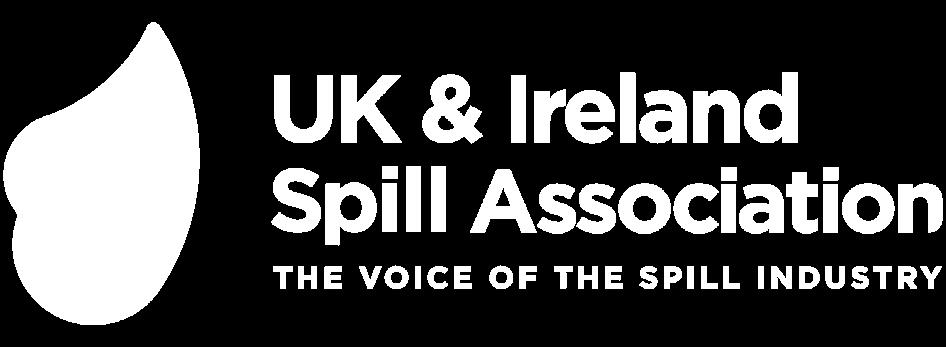
THE
ASSOCIATION ISSUE 26 May 2024
QUARTERLY NEWSLETTER OF THE UK AND IRELAND SPILL
CASE STUDY COLLABORATION IN SPILL RESPONSE
PLAN FOR THE BEST. PREPARE FOR THE WORST.
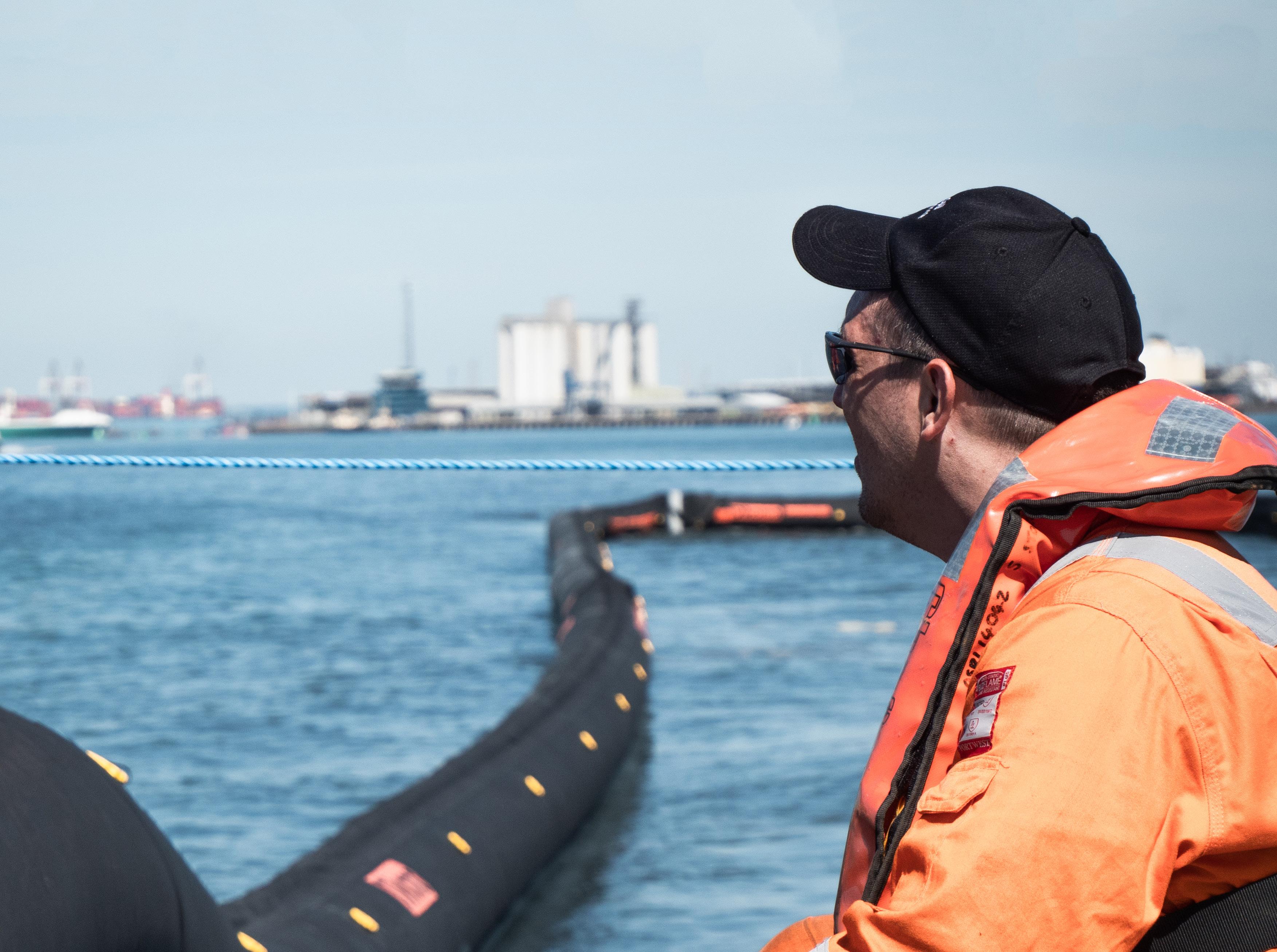
How prepared are you?
The unpredictability of a spill, the impact it can have on the environment, and on the responsible party’s business, calls for a prudent approach to regularly reassess potential risks and their consequences, and to apply commensurate levels of risk mitigation. But navigating through oil spill preparedness and response can be daunting.
With over 30 years of experience in oil spill response and preparedness globally, Oil Spill Response Ltd. provides peace of mind and expert support through every phase of preparedness from planning, training and exercising, to identifying oil spill equipment requirements and response services. Managing oil spill risk and meeting regulatory requirements can be left in our expert hands.
Strategically positioned in ten locations on six continents, OSRL offers an end-to-end oil spill service and integrated solutions for all of your preparedness and response needs.
We’re ready to assist anytime, anywhere. In the event of an incident, OSRL members have access to five oil spill
response experts for five days, with one call, ensuring coordination when it’s most crucial.
In good hands
OSRL Membership provides expert guidance and support across all tiers of preparedness:
• Training of personnel
• Range of contingency planning, consultancy and advice
• Fully maintained response equipment
• Exercises
Contact us
Get in touch to speak with one of our representatives about managing your oil spill risk: MyOSRL@oilspillresponse.com
www.oilspillresponse.com
WELCOME BY MARK SHEPHERD, CHAIR, UK AND IRELAND SPILL ASSOCIATION
INDUSTRY NEWS
MEMBER NEWS; INCLUDING APPOINTMENTS AT ADLER AND ALLAN
UNDERSTANDING THE CARBON FOOTPRINT OF SPILL RESPONSE AND REMEDIATION ORACLE ENVIRONMENTAL
ISAS UPDATE
AUTUMN CONFERENCE AND AWARDS REPORT AND LOOK FORWARD
EVS VS HYDROCARBON VEHICLES – SOME MYTHS EXPLAINED
WHY CAR CARRIERS ARE SUCH A PROBLEM WITH EVS?
CASE STUDY – AERATION –ECOLOGIA
Cover Picture: Trinidad and Tobago has been severely impacted by a third party spill from a barge that capsized in February 2024 in Cove Bay. It has impacted many of the tourist destinations at a peak time for visitors holidaying in the islands. UKEireSpill members are actively engaged in managing its impact.

LIVING WITH PARKINSONS
CRITICAL EVALUATION OF THE NEW UK’S LCRM RELEASE: A STEP FORWARD OR A MISSTEP?
COLLABORATION THE FUTURE OF SPILL RESPONSE - OSRL
MARINE SPILL AND PLASTIC POLLUTION CONFERENCE 11 AND 12 JUNE 2024
CASE STUDY: OIL BOOM SYSTEMS FOR HAZARDOUS AREAS.
NEW MEMBERS
UK AND IRELAND SPILL ASSOCIATION 2023 EVENT PLAN SPONSORED BY OAMPS AND OAMPS ADVERT
Spill Alert is the official magazine of the UK and Ireland Spill Association. It is published by the Association whose Registered Office is; 39 Chapel Road, West End, Southampton, SO30 3FG.

All enquiries for membership of the Association, editorial, advertising or attendance at events should be made to:
Mark J Orr, Executive Director, UK and Ireland Spill Association Ltd, International Spill Accreditation Scheme Ltd info@ukirespill.org
Tel: 0333 444 1890
Mob: +44 7864 707408 www.ukirespill.org
All enquiries for marine, shoreline and inland accreditation should be made to:
Mark J Orr, Executive Director, International Spill Accreditation Scheme Ltd
info@isasaccreditation.org
Tel: 0333 444 1891
Mob: +44 7889 714828 www.isasaccreditation.org
© UK and Ireland Spill Association Ltd - 2024
4
7
12 13
16 17
20 21
22 23 - 24 25 - 30 31 - 35 36 - 38 40 - 41 42 - 43 44 - 47 48 49 50 - 51 52 Contents 3
- 5
-
-
-
-
FOREWORD
Mark Shepherd, Chairman UK and Ireland Spill Association
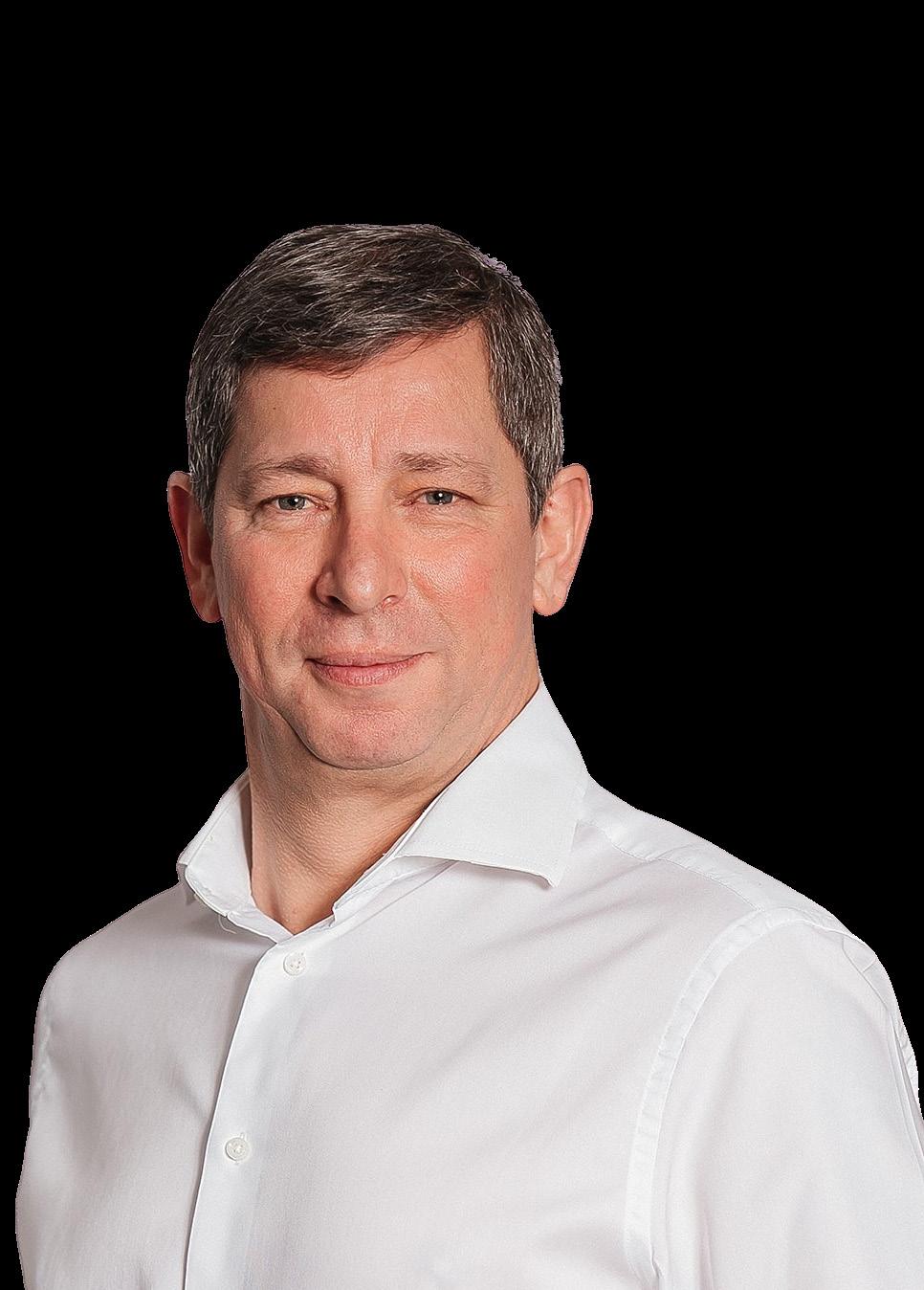
WELCOME TO 4
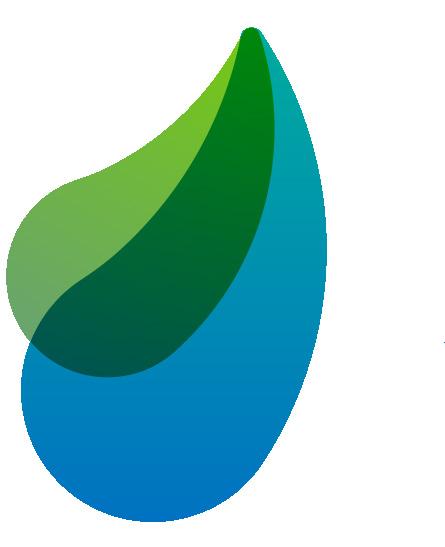
It was great to meet so many members to the Annual Conference and Awards Dinner last November. I enjoyed hearing so much knowledge in the room and the lively discussion that followed some of the presentations. Thank you to those that spoke so well about the work they do and the case studies they have experienced. The Awards dinner was great to see so many members attend and to support and applaud the awards winners. Our thanks to Spill Response Wales for sponsoring the go karting, RSK Response for sponsoring the pre-dinner drinks and Socotec for sponsoring the Toast to the Responder which was a lovely way to end the dinner!

The feedback from our post Conference and Awards survey indicated the desire to keep this event at Nottingham and to be one day. However the feedback was strongly for a mid-year conference to focus on marine matters. So the Board are underwriting the first of what may be an annual Marine Spill and Plastic Pollution Conference on 11 and 12 June at the National Oceanography Centre, Southampton.
The conference will focus on two issues:
A consequence of the drive to decarbonise shipping is that responders are dealing with pollution from spills involving existing hydrocarbon products such as Marine Diesel and LNG. At the same time they are expected to prepare to attend fuels involving emerging propulsion fuels such as methanol, ammonia and hydrogen often with LNG/LPG and possibly Li-Ion batteries also involved as alternate means of propulsion.
The imperative to recover lost nurdles quickly with minimal harm to the existing coastal environment is clear. However little guidance and best practice exists. Our Plastic Pollution Working Group has been developing this over the last 24 months using member experience gained from attending spills in UK waters and overseas. The goal has and remains to provide best practice guidance for ALL who respond to or have a responsibility for contingency planning to ensure environmental protection. The conference will reflect on what has been done and what we now need to focus on following the recent expansion of the Group.
Following the spill in Poole Harbour and the fire at Luton Airport spill and incident response has been in the headlines. There is a greater appreciation of what we do and how well we do it whenever called to do so.
Enjoy this issue of Spill Alert, thank you to the contributors!
5


Industry News
Updated marine spill preparedness and response good practice guides published
More details from: https://www.iogp.org/bookstore/ product/incident-manage ment-systems/

Incident Management System for the oil and gas industry
An Incident Management System (IMS) is essential for optimizing response times, providing clarity in command and control, improving resource coordination, and facilitating the cooperation and integration of responding organizations.
This document introduces the structure of an IMS to stakeholders, such as contractors, governmental entities, and response agencies, who may be asked to provide expertise, assistance, or response resources during an emergency
In partnership with Ipieca, IOGP has released updated marine spill preparedness and response good practice guides. This Ipieca-IOGP series aims to align practices, inform stakeholders, and promote awareness and education on marine spill preparedness and response. The new releases are IOGP-Ipieca Reports 517 – Incident Management System for the oil and gas industry, 515 – Oil spill exercises, and 480 – Oil spill responder health and safety.

Oil spill excercises
A well designed and implemented oil spill exercise programme enables personnel to simulate emergency response actions in a controlled, low-risk setting, providing the opportunity to assess and improve plans, responsibilities, and coordination.
This document is for those responsible for ensuring that oil spill contingency plans are practiced and verified, providing guidance on developing a programme that meets an organization’s or facility’s requirements.

Oil spill responder health and safety
When there is an oil spill, the health and safety of everyone, including the public and responders, are of the highest importance.
This document focuses on practical and technical safety considerations when responding to an oil spill. It identifies the main health and safety issues, their severity, and the practical steps needed to minimise the impact of the spill.
Another step forward for renewable liquid fuel as Government’s amendment is passed
The most significant piece of energy legislation in a generation, the Energy Bill, was debated in parliament on Tuesday and the government’s amendment regarding the creation of a Renewable Liquid Heating Fuel Obligation was passed without objection.
The amendment (new clause 63) mirrors proposals put forward by former environment secretary George Eustice in response to the industry’s (primarily OFTEC and UKIFDA) Future Ready Fuels campaign and paves the way for the removal of the financial bar-
More details at: https://oilinstaller.co.uk/2023/09/another-step-forward-for-renewable-liquid-fuel-as-governments-amendment-is-passed/
riers to rural homeowners making the switch to renewable liquid fuels such as HVO.
7

In a joint statement on the renewable liquid heating fuel amendment to the Energy Bill, Paul Rose, Chief Executive of OFTEC, and Ken Cronin, Chief Executive of UKIFDA, said:
“Following the conclusion of the Energy Bill’s Report Stage on Tuesday evening, we are pleased that a renewable liquid heating fuel amendment to the Energy Bill, proposed by the new DESNZ Secretary of State, Claire Coutinho, following support
from more than 30 MPs from across the political divide who supported George Eustice’s amendments on rural decarbonisation, has been accepted.
“Rural communities deserve to have a range of options to decarbonise their homes which reflect their view on affordability and level of acceptable disruption. The provision of a drop-in replacement renewable liquid fuel provides a clear pathway to achieving decarbonisation quickly.
“This amendment will require the Department of Energy Security and Net Zero to deliver a consultation on a renewable liquid heating fuel obligation within 12 months of the Bill receiving Royal Assent.
“We will work closely with the Department to make this happen and also to meet the clear wishes of many MPs expressed yesterday to ensure this process is delivered as quickly as possible and well within that timeframe.”
The bill returned to the Lords in September before progressing to Royal Assent.
Marine Spill & Plastic Pollution Conference,
June 11th - 12th 2024
Speakers:
Oil Spill Response Ltd, ITOPF, Cedre, University of Plymouth, University of Portsmouth, FIDRA, Oracle Environmental, Flora and Fauna International, Socotec, Sustainable Oil Recovery and Remediation - And more to come Alternative Fuels Panellists from: Blue Tack Marine, BP, Cedre, ITOPF, Oil; Spill Response, Lloyds Register, Harwich Harbour Authority, Maritime and Coastguard Agency, and more to come.

More details at: https://conference.ukeirespill.org
The
International Oil Spill Conference (IOSC)
- Monday, May 13Thursday, May 16, 2024
New Orleans, Louisiana
The International Oil Spill Conference (IOSC) provides a vital forum for professionals from the international spill response community, private sector, government, and non-governmental organizations to come together to tackle the greatest challenges facing us with sound science, practical innovation, social engineering, global research, and imagination.
The International Oil Spill Conference (IOSC) provides a vital forum for professionals from the international response community, private sector, government, and non-governmental organizations to come together to tackle the greatest challenges facing us with sound science, practical innovation, social engineering
8
and imagination. This conference is an ideal environment for government agencies, contractors, researchers, industry, and other stakeholders to work together toward mutual objectives through the exchange of ideas and lessons learned from actual spill responses and research around the world.
IOSC will celebrate its 25th Anniversary and look back at how far the industry has come and continue innovation in oil spill response.
The following Association members are attending: Darcy, Oil Spill Response, Vikoma and Interspill.
To register:
https://www.iosc.org/registration/registration
The conference programme is at: https://www.iosc.org/program/full-program
More details at: https://www.iosc.org

Interspill 2025
More details at: https://www.interspill.org/news/venue-anddates-for-10th-edition-of-interspill-announced/
Whilst much will focus on IOSC in 2024 in the short term, preparation for the next event in the Triennial series is Interspill 2025 to be held at London Excel from 8 – 10 April 2025.
Europe’s premier event for oil spill research, prevention, preparedness, response and restoration reveals new dates, venue, website and organising partner for its 10th edition and 25th anniversary year in 2025.
Interspill Ltd, the owners of Interspill – a triennial event that unites international stakeholders involved in marine spill research, prevention, preparedness, response and restoration – made a series of announcements pertaining to their 2025 show:
Interspill 2025 will take place in London at the world-class venue, ExCeL London.
The event’s three-day Exhibition, Conference and Supporting Programme (of educational, innovation and networking content) will be staged from 8-10 April 2025.
A new event website has been launched at www.interspill.org.
Five Senses Media Ltd (experienced UK-based organisers of international events) have been appointed as the official event management partner for Interspill 2025.
Interspill Ltd Director, Mark Orr said:
“We are thrilled to start the New Year with these exciting announcements; they combine to ensure the road to Interspill 2025 starts from the strongest possible platform. Our last event in Amsterdam 2022 was a great success. It reminded the industry of the huge value of coming together, face-to-face to affect positive change. Interspill 2025 will be a landmark edition in so many ways; we are aiming for record participation from exhibitors, sponsors and attending delegates. We are delighted to be working with the vastly experienced team at Five Senses Media and to have secured dates at ExCeL London, a world-class venue. Our new website is live, our Conference Committee are honing cutting-edge content themes and leading international brands have already booked their stands.”
Five Senses Media Ltd Commercial Director and Interspill 2025 Event Director, Tom Treverton, said:
“It’s an honour for Five Senses Media to be appointed as the official event management partner for Interspill 2025. This is a unique influential triennial occasion, with a rich legacy and an important future. The hard work is well underway, with market-leading companies securing their stands. It’s been a privilege to have already met so many inspiring people and companies. The industry’s passion for and commitment to this event is remarkable, and we are
9
fully focussed on ensuring this is both harnessed and reflected within our delivery of a momentous, world class 2025 edition.”
Launched in 2000, the 2025 event will be both the 10th edition and 25th anniversary year of the influential event. For over two decades, Interspill has provided an unparalleled European-based live platform, which draws together leading specialists from
across the globe to engender positive change and champion industry best practises, via its internationally recognised Exhibition, Conference and supporting programme of Science & Innovation workshops, training seminars and collaboration concepts. Previous editions have been staged in The Netherlands, France, Norway and the UK. For more introductory info see www.interspill.org/2025/about-interspill/story-and-purpose.

IMO agrees new guidance for safe transport of plastic pellets on ships
The IMO is advancing efforts to ensure the safe transport of plastic pellets transported on ships, which can cause damage to the marine environment if released into the sea.
Meeting from 19 to 23 February at IMO Headquarters in London, IMO’s Sub-Committee on Pollution Prevention and Response (PPR 11) agreed draft recommendations for the carriage of plastic pellets by sea, along with draft guidelines for cleaning up plastic pellet spills from ships.
The draft recommendations for the carriage of plastic pellets by sea in freight containers include the following actions:
Plastic pellets should be packed in good quality packaging which should be strong enough to withstand the shocks and loadings normally encountered during transport. Packaging should be constructed and closed to prevent any loss of contents which may be caused under normal conditions of transport, by vibration or acceleration forces.
Transport information should clearly identify those freight containers containing plastic pellets. In addition, the shipper should supplement the cargo information with a special stowage request requiring proper stowage.
Freight containers containing plastic pellets should be properly stowed and secured to minimize the hazards to the marine envi-
More details at: https://www.imo.org/en/MediaCentre/Pages/WhatsNew-2043.aspx
ronment without impairing the safety of the ship and persons on board. Specifically, they should be stowed under deck wherever reasonably practicable, or inboard in sheltered areas of exposed decks.
These recommendations, which aim to prevent a spill of pellets occurring, will be submitted for urgent consideration and approval by the Marine Environment Protection Committee at its next meeting in March 2024 (MEPC 81).
I think many had hoped that these recommendation would go further BUT they are a positive start.
The MEPC is likely to agree these first steps. As ever the key is in the wording and in our opinion should be stronger. The shipping lobby have toned down the language in the first recommendation to make it ‘normal conditions of transport’ . The most visible source of plastic nurdles is containers falling off the ships which this does not cover.,
However there are other matters in train related to the Plastic Treaty which is moving positively forward and the EU’s own guidance that promises to tighten usage and outlawing most single use plastic.
There is reason to be optimistic!
10

Oxford roadmap launched to manage plastic waste
Oxford researchers have published a vision for a sustainable , circular economy of plastics. The researchers from Oxford Martin Programme on the Future of Plastics at University of Oxford have outline ambitious targets to help deliver a sustainable and net zero plastic economy. In their paper published in Nature, the authors argue for a rethinking of the technical, economic and policy paradigms that have entrenched the status-quo, one of rising carbon emissions and uncontrolled pollution.
Currently the global plastics system results on 1 Gigatonne per annum (Gt/annum) of carbon dioxide equivalent emissions which is the same as the total combined emissions of Europe’s three largest economies (UK,, Germany and France). If left unchecked these emissions could rise to 4-5 Gt/annum. A further problem is the lack of recycling. In 2019 only 9% of the world plastic waste was turned into new products through mechanical recycling. The majority ended up in landfills or was incinerated and a significant proportion was mismanaged, ending up polluting terrestrial and marine ecosystems.
For more detail:
https://www.ox.ac.uk/news/2024-02-01-oxford-scientists-launch-ambitious-roadmap-circular-carbon-plastics-economy#:~:text=Oxford%20scientists%20launch%20ambitious%20roadmap%20for%20a%20circular%20carbon%20plastics%20economy,-Mathematical%2C%20Physical%20and&text=Researchers%20from%20the%20Oxford%20Martin,and%20net%20zero%20 plastic%20economy.

Tobago IDs Tug and Barge in Oil Spill as Search for Missing Tug
Officials in Tobago announced that they have identified a tug that is believed to have been moving the barge that later capsized causing the national emergency and still growing oil disaster onshore and in the Caribbean Sea. The information is similar
to an independent investigation that determined it was an articulated tug and barge system that foundered with the barge coming to rest upside down lodged on a reef just offshore at the southwestern end of the island.
The Ministry of National Security reports that its Coast Guard has reviewed video footage, satellite images, and other material, as well as working with multiple agencies and others including the Guyana
11
Coast Guard. As a result, they identified the tug which is missing at this point as well as revised their earlier reports to say the capsized vessel is an unpowered fuel barge that was being taken to Guyana.
They believe the tug Solo Creed (registered in Tanzania) operating out of Panama was towing the barge named Gulfstream. The tug had departed Panama in January and made a stop in Aruba and according to the Trinidad and Tobago Coast Guard satellite images showed the tug towing an object approaching the area around Tobago on February 4. They were able to track the vessel into the country’s

territorial waters, but eventually lost radar contact with both vessels. The oil slick and capsized vessel were first spotted on February 7.
The Equasis database lists the owners of the tug as unknown. They show the vessel as being built in 1976 but list it under a former name of Margie V. The tug was reported sold in the summer of 2023.
The authorities in Guyana confirmed that the tug and barge did not arrive as anticipated. Officials in Tobago continue to work with the various agencies and international authorities to locate the tug and its owners.
Understanding the fate and behaviours of Low Sulphur Fuel Oils Continues
Ship accidents can result in oil spills, causing time consuming and costly response operations. Successful oil spill response, using adequate equipment and methods, may reduce the impacts on environment and affected coastal communities. In recent years a new generation of fuel oils, LSFOs, are posing new risks and challenging oil spill responders. The proposed project is based on identified gaps in response technology and methods identified by the IMAROS project. The current project proposal is focused on two main challenges:
• Improve understanding of oil spill behaviour of LSFOs, and consequently decision making on all levels of response operations
• Improve capacities of mechanical recovery and shoreline response Data will be collected across Europe to improve risk perception and ensure representative collection of oil samples for the project. Characterization of the samples’ physical and chemical properties will be carried out to improve the knowledge of oil behaviour when spilled into the environment. The results are used to assess different response options, and as input to modelling of oil properties and drift.
Previously observed problems with oil recovery will be addressed in three separate trial periods. Equipment manufacturers are invited to participate in recovery trails under controlled conditions in test facilities in Norway and Finland, to identify promising approaches to recover oils with adverse properties. Shoreline response to LSFOs will be addressed, regarding oil behaviour, environmental impacts, and clean-up techniques. The activities cover laboratory and meso-scale experiments, as well as practical trails of cleaning techniques. The project consortium consists of both operational and scientific personnel and will synthetize the results from all work packages to general conclusions and operational guidelines.
More details from: https://civil-protection-knowledge-network.europa. eu/projects/imaros-2


VLFSO from this spill was hard to recover as it is lighter than prior marine fuels and some of its components emulsify when in sea water and sit at different heights in the water column making recovery by skimmers difficult.
The MV Wakashio grounding and subsequent break up on the shores of Mauritius in July 2020 was the first significant incident that resulted in a spill of 800 -1000 tonnes of VLFSO
12
Members News

Adler and Allan has reorganised into 3 divisions
More details at: https://www.adlerandallan.co.uk/about/divisions
Energy
Expert engineers prevent pollution in ageing hydrocarbon infrastructure and are changing the way we power the economy, by installing the sustainable energy infrastructure. Additionally, they advise businesses on sustainability and carbon reduction strategy, building approaches to meet their ESG commitments.
Environmental
In October 2023 Adler and Allan reorganised from five into three divisions to put a focus on specific customer, environmental and regulatory challenges. They work in synergy, combining expertise to deliver comprehensive environmental and infrastructure solutions. By maintaining separate divisions, the goal is to efficiently address a wide range of client needs while maintaining excellence in each area.
The environmental consultancy ensures organisations have practical pollution prevention strategies, and when the worst happens, they are able to quickly understand the impact of pollution events in order to mitigate its impact. Expert engineers work every day to install, build and maintain the environmental assets that protect businesses, communities and people from the impact of pollution.
Water
The water division focuses on the challenges of ageing wastewater and freshwater networks by creating their long-term asset strategy and delivering ESG in action by engineering solutions in infrastructure enabling water companies to deliver on their commitments for water security and pollution prevention.
13
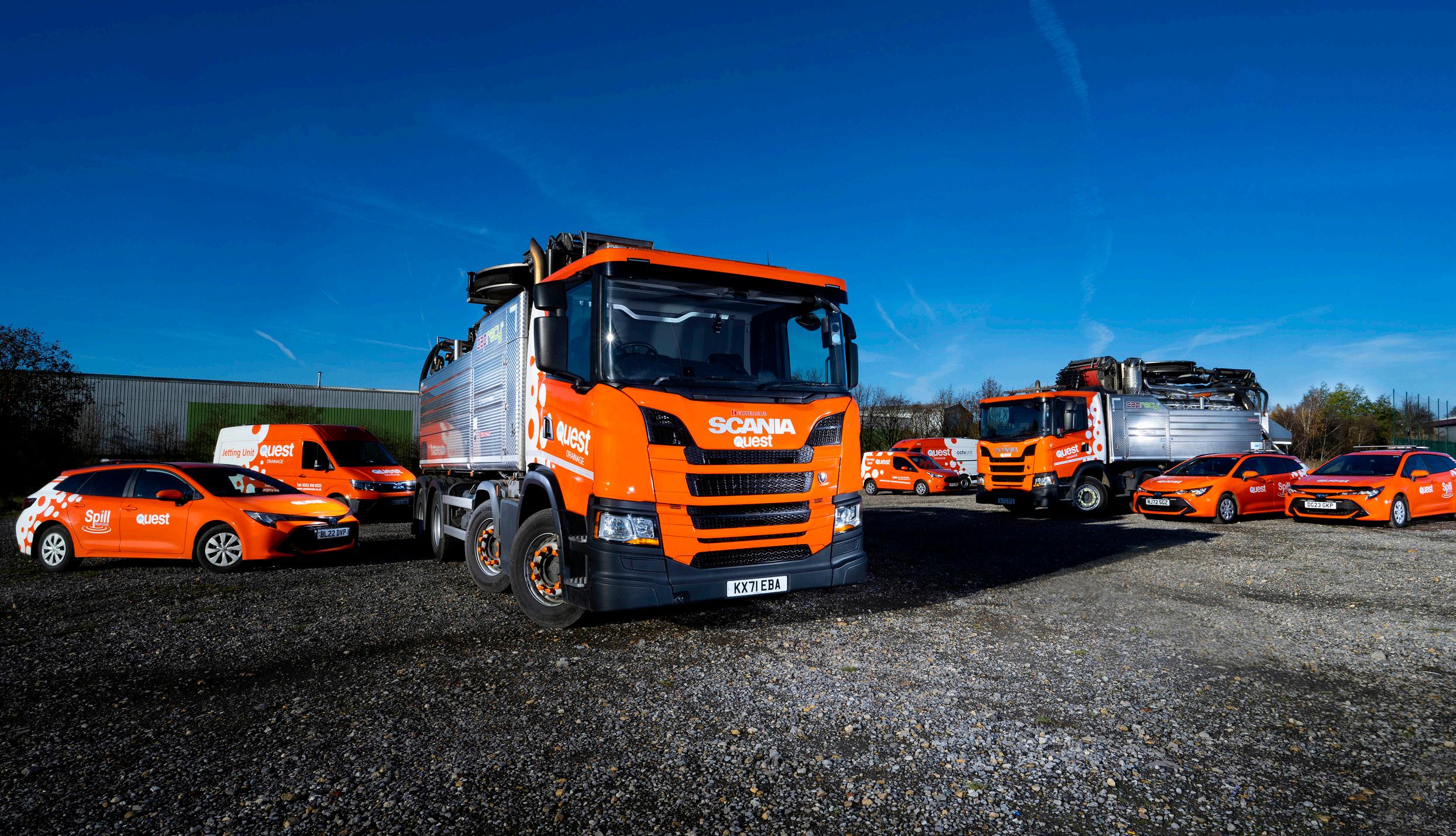
Quest Waste Management saves time and improves efficiency with cappellotto
self-cleaning
recycler unit
Quest Waste Management is owned and run by CEO Ivan Smyth with the support of a strong leadership team. Business is booming,thankspartlytohavingtheright equipment for the job and delivering na-tionwide coverage. That equipment now includes a 32-ton Cappellotto recycler, sold in the UK by Williams Tanker Services of Morley. As the Cappellotto was a sig-nificant departure from Quest’s previous vehicles, and Williams Tanker Services were confident in the capabilities and performance of the machine, they gave Ivan a ‘try-to-buy’ option. This meant Quest used the vehicle for an agreed duration on a weekly fee basis with the option of either buying or returning the machine at the end of the term. Although Ivan had no previous knowledge of Cappellottos, hewasvery pleased with the performance of the vehicle.
Quest Waste Management, based in Ossett, West Yorkshire, was looking for a dirty water recycling tanker that was both high performing and competitively priced, and had spent some time looking around for a suitable machine and weighing up the many options out there. One supplier was so confident that its machine, new to the UK market, was the right one for Quest that it enabled them to actually try the unit for themselves for an agreed period. Its performance was so impressive, incorporating an effective self-cleaning recycler, that Quest bought it outright – and only a few months later, ordered an additional unit.
Ivan continues to be delighted with Cappellotto: “The best thing about it is the design of the recycling system; there’s nothing else like it on the market and it’s the best way of recycling for us. It’s not just limited to foul sewers, road silt and surface water drains, but because it separates and cleans the water it saves time, replacement filters, repair bills and we are left with water that is not too coarse – well below the micron levels of other machines we’ve seen. Even our jetting hoses last longer as a result.”
In addition to these two new vehicles; operating from depots nationwide Quest’s fleet includes tankers, recycler units and spill response vehicles and specialist survey equipment including:
• 30,000 litre Tankers & Tractor Units
• 20,000 litre Tankers
• 15,000 litre Tankers
• Off-Road Tankers
• RTN Recycler Units
• Storage Tanks 35m³ - 75m³
• Jetting Unit Vans
• Spill Response Units
• IPEK Drainage Inspection Vans.
For more information: www.questwaste.co.uk
14
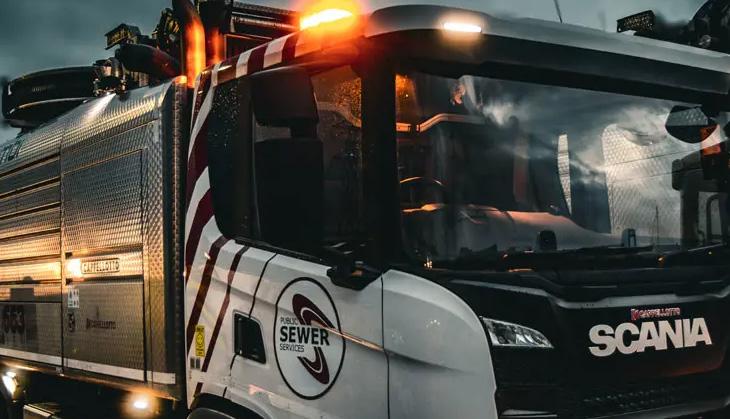
Adler and Allan acquires specialist water and drainage company Public Sewer Services
Environmental risk reduction services business, Adler and Allan, has acquired specialist water and drainage company, Public Sewer Services (PSS).
More details at:
https://www.adlerandallan.co.uk/ knowledge/news/adler-and-allan-acquires-public-sewer-services
PSS has been providing an in-house one stop solution for all aspects of water and drainage including specialist drain lining, traditional open cut excavation, tankering, CCTV, blockage clearance and root cutting for over 25 years. Having invested heavily in innovative no dig technology sourced from around the world, its experienced team can complete patch repairs, structural pipe lining, pipe bursting, impact moling, pitch fibre reforming and directional drilling.
Lee Freeman, Managing Director, Public Sewer Services, said: “We are excited to be joining the Adler and Allan Group. The services Adler and Allan offers, and their established position in the utilities market, allows us to offer our expert no dig technology services into more companies, providing a full turnkey package of frontline operational capability.”
Mike Williamson, Managing Director, Adler and Allan Water Division said: “Adler and Allan’s mission is to solve industry’s biggest environmental challenges from reducing pollution and preventing harm to the environment, to mitigating the effects of climate change. To achieve this goal, we help organisations manage, improve, maintain, and upgrade their infrastructure. This critical acquisition supports our mission as well as our ambitious growth plans, by further enabling us to deliver our innovative, specialist drain lining services nationally.
This is Adler and Allan’s fourth acquisition in the utilities sector, and seventh overall in the last three years.
This acquisition strengthens Adler and Allan’s position as a national turnkey partner to the utilities sector with services from strategic infrastructure advice, monitoring, data and analytics, front line operational capability, and environmental consultancy.
MEMBERS NEWS
15

Mapping the Global Plastic Pellet Supply Chain
In a world increasingly conscious of its environmental footprint, the issue of plastic pollution has taken centre stage. While much attention has been focused on larger macroplastic debris and litter, the full lifetime cycle of plastics is not commonly concerned when discussing plastic pollution. However, following an increasing number of pre-production plastic pellets being identified across the globe, a review of the global supply chain of plastics will be able to identify the potential causes of the emerging pollutant.
Plastic pellets, commonly known as ‘nurdles’, are the building blocks of countless plastic products, from single-use water bottles to packaging materials. However, the mishandling and mismanagement of these pellets through the production, transport and manufacturing have resulted in substantial spills directly into waterways and the oceans, leading to widespread contamination.
Oracle Environmental Experts has been working alongside FIDRA, an environmental charity working to reduce plastic waste and chemical pollution, and is pleased to announce a new report ‘Mapping the Global Pellet Supply Chain’. The report offers a comprehensive analysis of the extent of the supply chain and scale of the pollution. Looking into examples of acute and chronic losses, as well as touching on the impacts of this pellet pollution on communities, livelihoods, and ecosystems which can be viewed here.
Oracle Environmental Experts’ own Sam Perkins and Joshua Doran, joined by FIDRA, discussed some of the key findings of the report in a webinar presentation that may be viewed at:
https://www.youtube.com/watch?v=eFSs_ Df_FYI
A number of member companies have produced video reviews of 2023
Oil Spill Response Ltd
https://www.oilspillresponse.com/news-media/news/osrls-2023-achievements/
Briggs Marine
https://www.briggsmarine.com/media/ news-insights/look-back-2023/
MEMBERS NEWS
16
Emergency Response sureresponse
•Spill response, management and clean-up
•Establishment and management of response bases
•Equipment rental and supply
•Supply of emergency response teams
•Standby response services
•Associated waste handling, transpo a on & disposal
•Pipeline suppo
•Onshore & o shore suppo
•Training & Consultancy

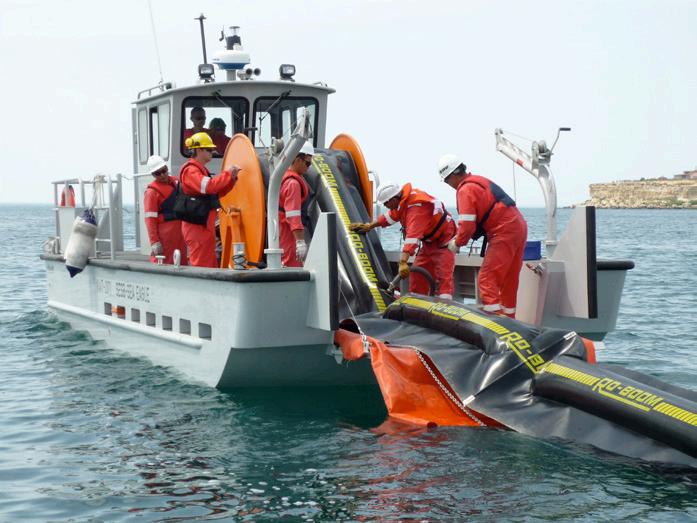

spill response and remediation works, Oracle Environmental Experts have been working with QuestGates and since the start of 2023, on all our completed projects for QuestGates, we have been using the QuestGates carbon calculator to establish where the bulk of our carbon footprint comes from in our works, and to establish how we can best seek to reduce it.
To illustrate the use of the QuestGates carbon calculator, we provide below two examples of the carbon calculator, firstly for a site where excavation and off-site treatment of kerosene contaminated soils was carried out (Case Study 1) and secondly for a site where in-situ treatment using soil vapour extraction (SVE) and in-situ chemical oxidation (ISCO) was completed (Case Study 2).
SERVICES
a sureclean company
17
info@sureclean.com

Case Study 1: Excavation and Off-site Treatment

Spill Summary
An unknown volume of domestic heating oil (kerosene) was lost to ground at a domestic property following accidental damage to a fitting attached to the oil storage tank serving the property.
The spilled kerosene resulted in the contamination of surface gravels, wooden decking and underlying soils within the property’s rear garden across an area of approximately 15 m2.
Remediation and Verification Works
To facilitate access to the works area, the property’s oil supply system was disconnected and relocated by an OFTEC registered engineer, and the oil storage tank’s supporting structure and surrounds were dismantled and removed from site.
Kerosene contaminated soils were then mechanically excavated across 15 m2 to a depth of 2 m below ground level. Delivery of plant/equipment (namely an excavator and site welfare) resulted in 8 Kg CO2e. A total of 42.98 tonnes of kerosene contaminated material was removed for offsite treatment at a suitably licensed facility, resulting in 1,081.11 Kg CO2e. from waste haulage and treatment. A total of 55 litres of diesel was used to fuel the excavator, accounting for 183.01 Kg CO2e.

18

Carbon Summary
As can be seen by the adjacent chart, ‘waste transport, reclamation and disposal’ was the primary source of CO2e on this project despite the waste being treated rather than being disposed of in a landfill, accounting for 1,081.11 Kg CO2e.
Travel was a close second, with 1,047.98 Kg CO2e. generated.
On site fuel usage accounted for 183.01 Kg CO2e.
Deliveries of plant equipment accounted for 8 Kg CO2e.
Deliveries of materials accounted for 2.67 Kg CO2e.
The total carbon footprint of the project was 3.05 Tonnes CO2e.
Reinstatement
Following verification soil sampling, the excavation was backfilled with appropriately compacted Type I MOT aggregate. The delivery of this material generated 2.67 Kg CO2e. and the material itself accounted for 651.50 Kg CO2e.
The garden’s surface was left unfinished as per the client’s request.

Case Study 2:
In-situ treatment using SVE and ISCO

Spill Summary
Filter bowls connected to the heating oil supply system at a detached cottage in Dorset failed resulting in the release of an estimated 250 litres of kerosene to ground adjacent to the property.
The kerosene had contaminated the concrete base and the soils beneath and in proximity to the filter bowls and the associated oil storage tank, and the contamination posed a risk to health, building structures, controlled waters and the drainage system. on the adjacent main road.
19
Remediation and Verification Works
Owing to the location of the kerosene contaminated soils immediately adjacent to a main road and their raised level compared to the adjacent building structures, excavation and removal of the contaminated soils was not considered appropriate. Therefore, in-situ remedial options were trialled with the principal remediation technique adopted being SVE. A total of 14 no. perforated steel lances were advanced over a 10 m2 area and an SVE system was installed and operated for a 10 week period.

Carbon Summary
As shown in the adjacent chart, the principal carbon footprint on this project was related to project travel accounting for 558.13 Kg CO2e. The ‘other’ component was primarily derived from the electricity usage associated with the operation of the SVE system which accounted for 543 Kg CO2e
Cement and mortar used in reinstatement of the work area on completion of remediation accounted for 322.35 Kg CO2e and pipes and drainage accounted for 9.35 Kg CO2e. Waste transport, reclamation and disposal accounted for 2.17 Kg CO2e The total carbon footprint of the project was 1.44 Tonnes CO2e.

For polishing, 2 no. ISCO applications were completed using a dilute hydrogen peroxide solution applied under gravity. Over the treatment period mean exhausted VOC concentrations reduced from 78.31 ppm on the date of installation to 1.61 ppm during the final monitoring visit
On completion of the SVE and oxidant treatment, a total of 2 no. verification air samples were obtained from the property which confirmed internal ambient VOCs were at an acceptable level.

Concluding Remarks
We were able to establish using the QuestGates Carbon Calculator that by adopting an in-situ treatment scheme of works, we saved approximately 1.5 Tonnes CO2e compared to physical removal of contaminated materials and replacement with new.
We are constantly reviewing and adapting our practices and systems to reduce the carbon impact, lifecycle, and the cost of our remediation projects.
20

ISAS Update
It has been a very busy time within ISAS with Bill Boyle, our Principal Marine Accreditation Assessor, visiting Isle of Scilly, Shetland Islands and Dublin in the last quarter Steve Guy, our Senior Inland Accreditation Assessor, spent a very busy year; in Ireland in April and then in the Birmingham area in May delivering accreditation site visits for a number of OSRO’s, and also accrediting a number of spill response training courses for ISAS members, with the follow on work from these audits complete. Steve also completed site visits for a number of OSRO’s in the Manchester area (stage three of the accreditation process) in September.
In all cases the feedback has been positive, and we took this into our ISO 9001 audit which we passed well.
Change to the inland accreditations made in 2022 mean that the accreditations need to be supported by evidence and the initial stages of the audit are done via a pre-visit information request (stage 1) and a Teams meeting to go through a rigorous question set for each of the requested accreditation categories (stage 2) with the audit process concluding with a site visit at one of the company premises.
The longer process is useful as it gives a chance to review how processes are documented. The accreditation process has given companies a chance to review how they carry out audits, training, equipment checks and maintenance. The accreditation process has revealed that many companies never record these valuable activities. Documentation is important as this is used by the management team to ensure that the management systems are working properly!
Sadly, Neil Marson (the scheme manager) had to retire on grounds of ill health. We wish him well and thank him for his hard work following the sad death of John Dawes. Mark Orr has replaced him.
ISAS has seen a couple of businesses leave the accreditation scheme in the 2023, some stating that they are not winning sufficient work to justify continuing. This is a shame, and we hope that work will pick up for them and they will return.
However we have also had five new companies that have seen the benefits of being accredited and the benefits of drawing on the assessors many years’ experience. The scheme currently sits with a healthy membership.
Whilst the latest version of LCRM has flaws that we have raised with the EA sadly some remain and it still has its critics, We were pleased to see that its guidance does urge the use of experience accredited contractors and links to www.isasaccreditation.org. Let hope this makes a difference!
21
Lately calls for assistance for those with a spill or potential oil leaks have become more frequent. Interestingly some have come through recommendations to contact us from local authorities, some from insurance companies and several from environment agency officers. All enquirers are given the details of the three closest response companies with the accreditations relevant to the type of spill. In all this happened 85 times in 2023. We have made major updates to www.isasaccreditation.org to ensure it reflects all accredited companies and their modules. Please keep your details up to date and let us know if there are any changes or errors.
We held an Accreditation Steering Group meeting on 29th September to present the current scheme to the environmental and maritime regulators who continue to support it. They are enthusiastic about the scheme, and support its ongoing development. They are delighted that it is being kept up to date and have confidence in it.
At the Annual members Meeting in November the members agreed to appoint a new Board which has slimmed down now and is as follows:
Chair – Brian McGonagle
Vice Chair – Jon Burton
Inland auditor – Steve Guy
Marine Auditor – Bill Boyle
UKEireSpill – Mark Orr
This allows for two vacant slots that will filled when the board needs new expertise eg HNS, New fuels etc.
https://isasaccreditation.org/the-isasboard/
This year we are introducing one ISAS webinar each quarter on relevant themes. If you have a topic that you would like covered please let your assessor know.
As many of the inland companies will know, regrettably Steve Guy has asked to retire to spend more time at home. We will be announcing his replacement shortly. I would like to thank Steve for all of his hard work and dedication since joining ISAS. He has helped us modernise accreditation and optimise the question sets for each module. These are big boots to fill.
During this year we intend to produce a module for those that wish to be accredited for attending plastic pollution spills on shoreline and rivers.
We are also considering a module for those companies that wish to be accredited to attend Lithium-Ion battery fires. These are on the increase as the roll out of EV cars increases. However they are not just car fires but also e-scooters, e-bikes and from domestic and commercial battery storage systems. Our role in these incidents is to assist the Fire and Rescue Services and when safe to allow them to hand over the incident to the responder to make the site safe and importantly manage the fire water run off that is generally heavily contaminated.
More details at: www.isasaccreditation.org

22
2023 Annual conference and awards
Winners
announced at the
UK and Ireland Spill Association
Annual Awards
The Association Annual Conference was held again at the Nottingham Belfry Hotel who did a good job of helping the Association deliver and excellent conference and awards dinner.
The day was preceded by the Inter Company Go Karting competition that was kindly sponsored by last years Winners – Spill Response Wales!
Though keen to retain this honour their participation was blighted by a bout of COVID that clearly took away their star drivers. With some other drop outs on the day before the event we had perhaps less competition that was expected but it still produced some close and competitive racing.
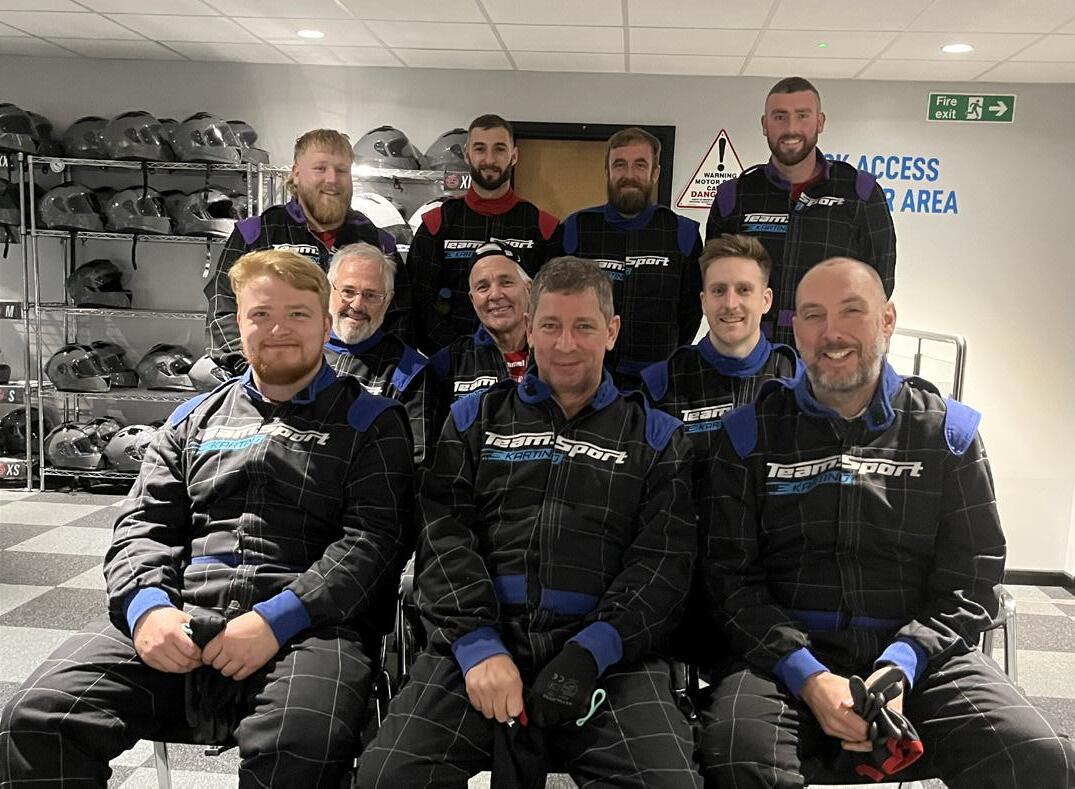
Furthermore this year the karts were electric so now much heavier but also very quick to accelerate. It made handling around the many corners trickier than last year! After the warm up practice laps the first trial session was pretty evenly matched with Spill Response Wales out in front. However in the final competition the racing was much closer. A pile up early in the final series that cost the leaders several laps opened the door to other to shine and it was Frands Pilegaard Jensen of DESMI who proved to be the fastest overall.
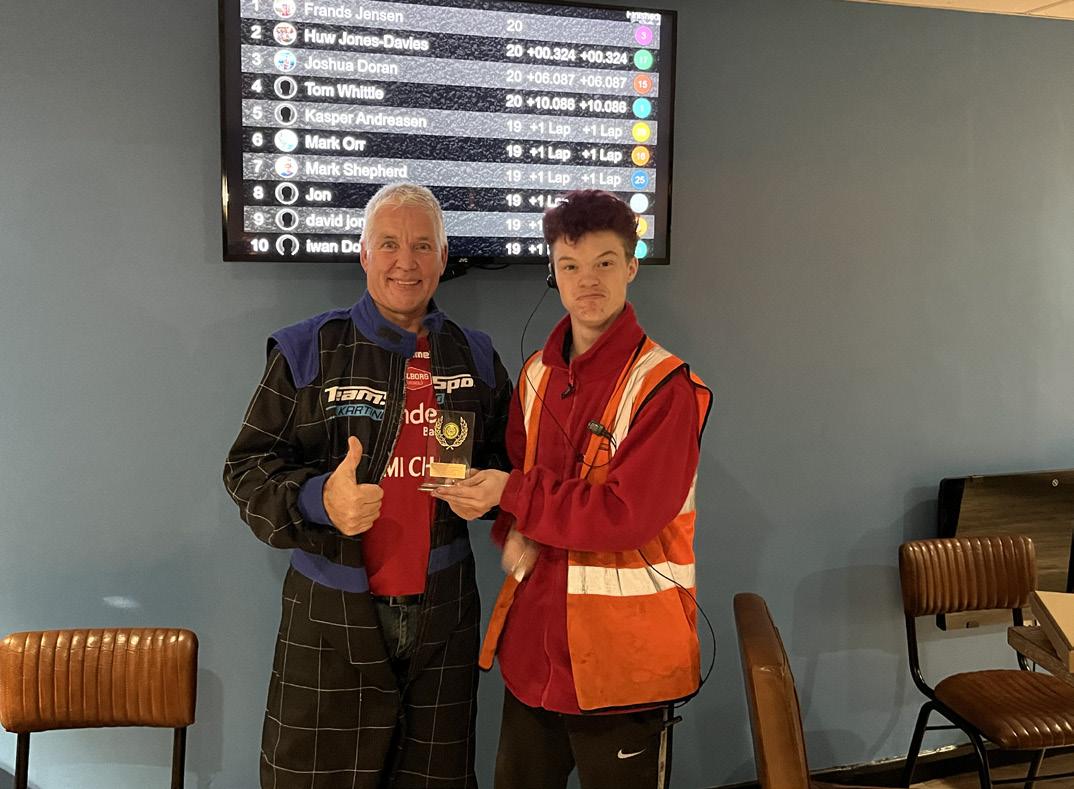
As ever it was a great night out and a lot of fun!
Annual Conference
The Conference was well attended and topics covered were on four themes; Sustainability, Emergiung Contaminants, Alternative fuels and Learning from Incidents. This allowed presentations on a diverse range of topics from sustainability, plastic, PFAS and sampling for testing in labs. It was a good day with many questions for the speakers and high quality throughout.
The external speakers gave us a wider perspective of what else is going on in industry and we were grateful to Nicola Harries of CL:AIRE and Richard Williams of Vertase for their presentations.
The networking sessions were brisk and lively.
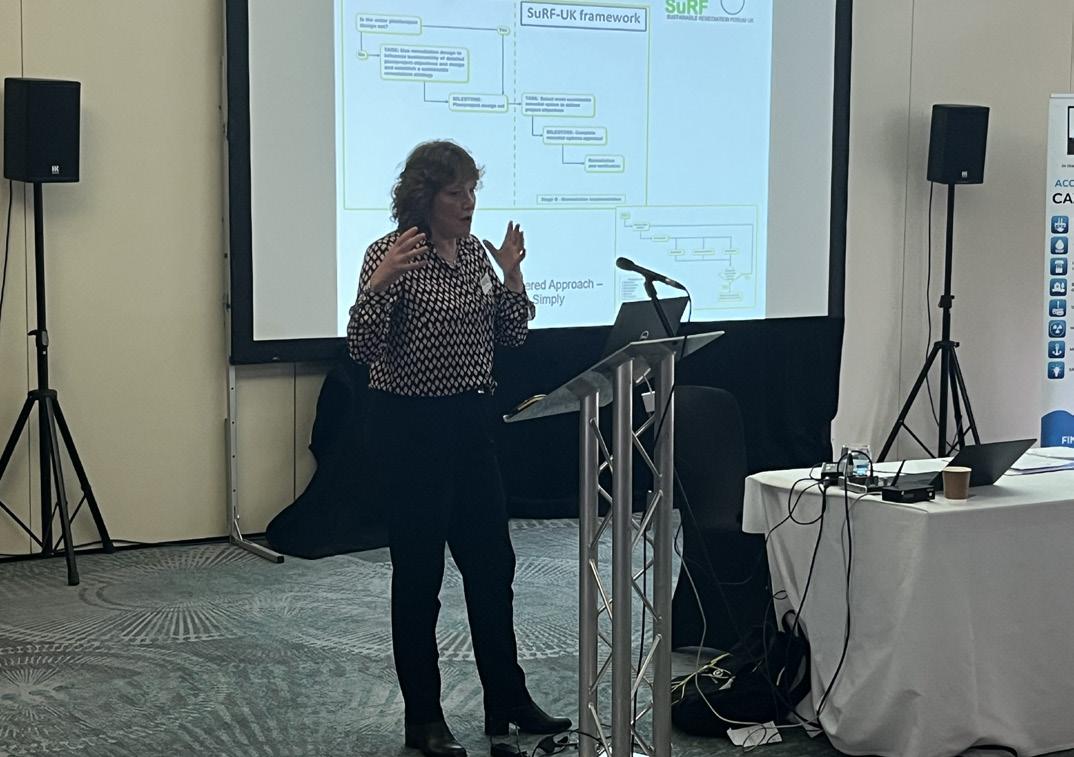 Frands Pilegaard Jensen of DESMI - our go kart champion of 2023
A very motley gang of boy racers!
Nicola Harries of CL:AIRE
Frands Pilegaard Jensen of DESMI - our go kart champion of 2023
A very motley gang of boy racers!
Nicola Harries of CL:AIRE
23
The Awards Dinner
The UK and Ireland Spill Association Autumn Conference concludes with a gala dinner and and Awards Ceremony Dinner that recognised the excellence so evident in our industry.
Having received a record number of entries the judges had difficult choices to make. It was with great pleasure that the dinner celebrated our award winners:

1. Rising Star Award
To recognize the importance of attracting new talent into our industry and celebrating their outstanding achievements. This award is open to individuals of any age who have been in their current role for less than three years.
Abi Smith, Adler and Allan Ltd




2. Inland Responder: Large Incident
To recognize response actions by a company in managing a large and complex incident that has successfully managed the environmental risk and impact of a hazardous product spill over the last year.
Adler and Allan Ltd
3. Inland Responder: Smaller Incident
To recognize response actions by a company in managing a single product spillage incident and successfully managed its environmental risk and impact over the last year.
Ecologia Environmental Solutions
4. Marine/International Responder
To recognize response actions by and from within a company to a spillage incident which has resulted in a significant success for that company in the field of spill response over the last year.
Oil Spill Response & Adler and Allan – Poole Harbour
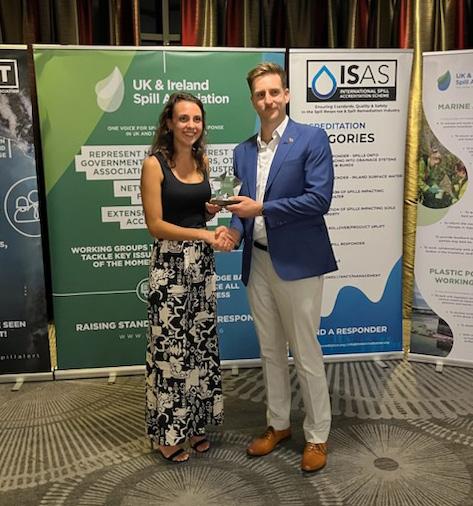




5. Manufacturer of the year
To recognize the manufacturer whose products have made the most significant contribution to spill response over the last year.
Darcy –STRATUS Helicopter
Dispersant Spray System
6. Sustainability Award
To recognise an innovation, change in working practice or initiative that has demonstrated a reduction in GHG emissions or generated positive progress toward sustainability in spill response.
Oil Spill Response Ltd
7. Innovation of the year
Innovation is what drives the industry forward, especially during times of economic restraint – this award is for a product or a service that has made a significant impact within the industry over the last year.
Darcy –STRATUS Helicopter
Dispersant Spray System & Adler and Allan – PFAS disposal
Abi Smith, Adler and Allan receiving the Rising Star award 2023 from Josh Doran, Oracle Environmental, the Rising Star in 2022
24
Electronic Vehicles vs Hydrocarbon Vehicles some myths explained
If you have flicked through any social media recently you cannot have failed to see the concerns surrounding lithium-ion batteries and electric vehicles.
In the instances of fires caused by e-bikes, e-scooters and disposable vapes the concerns regarding lithium-ion battery safety are well founded. There is not a day that seems to go past without a fire, resulting in severe damage to property, personal injury or tragically death.
For e-bike and e- scooters the guidance is clear, do not leave them to charge unsupervised, do not charge overnight and if possible do not charge indoors. If there is no alternative to indoor charging, ensure the equipment being charged is not blocking a safe exit route.
However, for electric vehicles the situation is more complicated, and the available data is harder to accurately assess and analyse. As a result of this society seems to have polarized itself into taking extreme views reading the safety of EV and ICE’s.
The extreme pro EV camp believes an EV can do no wrong and the EV poses no risks when compared to and ICE vehicle. The extreme anti EV camp believe lithium-ion battery vehicles are mobile time bombs waiting to explode at any minute.

Setting the scene
When we look at the nature of ALL vehicle fires, we have to understand that in the last 20 years car design and the materials used for car construction have changed significantly regardless of whether they are EV’s or ICE’s. ALL vehicles now contain far more electrics and volatile organic materials than ever before.
The use of these materials means that ALL cars will burn more fiercely than they ever did before in the event of a fire. The intensity of a modern-day car fire ensures that any fire will spread more quickly from vehicle to vehicle. The use of more volatile organic materials will also mean that a modern car will give off more toxic fumes and result in the creation of more highly polluted fire water run-off.
For the purpose of this article, I would like to focus on the sensible “middle ground” on which we should base any risk assessments and also to dispel some of the common myths regarding both EV’s and ICE vehicles as both for and against camps try to play one vehicle type off against the other.
These facts are confirmed from feedback from firefighters and first responders tackling car fires globally. All modern cars now take longer to extinguish and require more water than they ever did before.
At EV-EXBOX we look at the typical risks associated with both EV and ICE vehicles, and we find that in many respects they are pretty similar.
A petrol car has the inherent risk of fire, a release of explosive fuel vapour, emitting toxic fumes and creating a serious pollution event. Likewise, an EV car can catch on fire due to thermal runway, emit explosive and flammable vapour, emit toxic fumes and result in a pollution event. With this in mind we struggle to understand why the design of EV charger locations are not as onerous or well defined as those for petrol filling stations when the risks attributed to both EV’s, and ICE’s is comparable.
25

EV’s catch fire less than ICE’s
To begin with we need to understand that the frequency of EV fires compared to ICE fires is very difficult to factually record with any degree of accuracy on a global basis.
To date I have seen figure published that state, “You are 24 times more likely to been involved in an ICE fire than an EV fire” or, “0.3% for EVs cars caught fire globally compared to 1.05% for ICE cars”.
The problem we face as an industry going through a huge transition is we still do not have enough data to make a true statistical comparison that is meaningful to identify the differences between the fire frequency of EV’s and ICE’s.
The challenge with the current data is the huge disbalance in the numbers of EV’s vs ICE’s. Just reporting the numbers is not enough as for a true analysis we must consider vehicle age profiles vehicle type, vehicle use, vehicle power, vehicle mileage, vehicle usage, frequency of servicing, previous crash history etc…. with regards to both sets of vehicles in the data set.
Thankfully there is some great work currently being undertaken by EV Fire Safe in Australia and the NIPV, Dutch Institute for Safety and with time, (probably at least
another 10 years), we could have enough data to compare EV fire frequency with ICE vehicle fire frequencies using truly comparable data sets.
However, maybe we should even challenge the relevance of the EV vs. ICE comparison, especially when new ICE vehicle manufacture stops 2030-5. At some point we will reach a tipping point in the balance between EV’s and ICE vehicles and in another 20 years, we may only have EV fires to worry about.
As we clearly understand the fire risks of ICE cars surely it is better to just focus our attention to EV and hybrid data to assess where, when, and how they catch fire. If you believe the current data that EV’s catch fire less, then let’s understand why they burn at all and, try to eliminate this through design of both vehicles and charging infrastructure. If we can do this, we achieved something meaningful through the data analysis for the future safety of EV’s.
Myth verdict
Stop comparing EV and ICE fire frequency it will be an ever-moving target. What is inevitable with any mechanical device is the risks of failure resulting in fire increases with usage and time. If we add to this our demand for more powerful batteries and faster charging the problem will grow but hopefully be balanced by some advances in battery technology. As we move to battery storage systems in charging poles, we must now also to consider not just the EV’s but also the charging infrastructure supporting them.
26
1

EV fires are more difficult to extinguish than ICE fires
With the true unknown probability of an EV or ICE fire set to one side we should perhaps focus on what happens when we do have a vehicle fire, (already knowing that all car fires are harder to deal with than they were 20 years ago). For ICE cars the emergency services have had over 100 years of practice in extinguishing fires, so the risks are known, the training is in place and the equipment carried is fit for purpose.
For EV’s there is more of a challenge as the emergency services and the entire fire industry is still innovating to try and make lithium-ion battery fire suppression in vehicles more effective. The biggest challenge still sits with the car design itself where the battery packs are very inaccessible. The secondary challenge is that the exothermic reaction that is,” thermal runaway,” does not behave like a traditional ICE fire.
A lithium-ion battery in thermal runaway emits highly flammable and explosive gas. When the gas ignites there can be a vapour cloud explosion or the violent burning off of the electrolyte gas as it is released from the battery pack. But is that not the same as petrol vapour which can explode or burn as well?
In some ways the answer is YES, however, with a petrol fire once you starve the fire of oxygen or remove the vapour you have effectively controlled the fire. With a lithium-ion battery fire starving the fire of oxygen can be challenging as the battery creates its own oxygen during thermal runaway. What you may do during an EV fire is extinguish the flames that were the result of all the burning volatile organic materials, plastics, rubber etc…. but the thermal runaway in the battery will continue. As long as the thermal runaway continues the battery will continue to emit flammable and explosive gas and so we enter the cycle of EV fire re-ignition, which can persist for days.
Myth verdict
Yes in todays world an EV presents a bigger challenge to firefighters than an ICE vehicle due to the nature of a lithium-ion battery fire. Aside of the battery the burn characteristics of an EV and ICE are pretty much the same.
2 27

An EV fire creates a bigger environmental incident than an ICE fire
What you will often hear regarding an EV fire was the fact that tens of thousands of litres of water had to be used. This is often the case and sometimes the EV can end up in a total submersion container. When we look at the volumes of water used, we should ask ourselves how much of this water was used effectively?
All cars will create highly toxic fire water pollution. An EV vehicle fire will, however, release more pollutants if we use more water and if the battery pack splits and is flushed as part of the firefighting process.
When we look at innovation the key to controlling an EV fire is around cooling the battery.as this slows down and eventually stops thermal runaway. Simply turning a fire hose onto the battery and using water alone may not be the best use of such a large volume of water. New equipment on the market allows the battery to be punctured or cut into allowing the battery compartment to be flooded with water. The difficulties with this arise with locating the best place to create a successful battery penetration. We have to consider
all the various differences between the makes and models of EV’s. In terms of personal safety directly trying to access the battery pack puts the emergency services closer to the burning vehicle. If battery penetration can be successfully achieved then yet less water will be used, however, as we mentioned before if the battery pack is flushed then this will result in the highest release of toxins into the firewater.
Having reviewed a number of high-profile ship fires recently, (and let’s not debate if it was EV or ICE until the investigations are completed), it seems innovation is now looking at water misting as a more effective cooling solution than water drenching. Water misting using an added encapsulation agent to promote rapid cooling may take us even a step further in the effective suppression of a thermal runaway event using less water.
Myth verdict
All modern cars create more toxic firewater and smoke than they ever did before which has been overlooked in terms of pollution control mechanisms where any cars park or are charged. The EV has the potential to release more heavy metals and PFA chemicals if the battery pack is flushed. The use of excessive amounts of water used to combat EV fires will make the EV firewater run off harder to contain.
3 28
There are fire extinguishers for lithium-ion battery fires
When we consider risk assessment, we cannot ignore the behaviours of our customers and how they interact with our safety systems. For a petrol spill they may grab a sand bucket and happily throw its contents over a spill. In a fire they might grab a fire extinguisher as they are typically located next to the pumps, and we are happy for them to do that. So, what does a customer or site operator do in the event of an EV fire?
On the marketplace today there is an array of fire extinguishers that profess to be suitable for lithium-ion batteries, but not all of them. A typical fire extinguisher may contain between 9 – 50 litres of firefighting medium. This may be enough for laptops, phones, e-bikes, or mobility scooters but it will have no effect on an EV battery fire. There is simply not enough medium to cool the
battery and probably not enough to extinguish all the organic materials once they are fully alight. It is important to remember a lot of EV charging is unmanned and unsupervised so a fire may be well established before any alarm is raised and action taken.
Myth verdict
There is no fire extinguisher suitable for an EV battery fire. The desire of an EV driver to save his own vehicle should not be encouraged through the use of fire extinguishers, leave it to the professionals.

A fire blanket will put out an EV fire
If we look at fire blankets then the application of these is really a job for between 2-4 people, not an individual.
Once of the key challenges in deploying a blanket is you need to get close to the vehicle and the EV can jet out flames from the battery pack up to 2-3m and if it’s a hybrid or petrol car there is the risk of explosion from the petrol tank.
If a fire blanket is successfully deployed it can extinguish the flames associated with the organic material components of the car through oxygen starvation. However, as discussed before, the battery can
generate its own oxygen and if not cooled it will continue to emit highly flammable electrolyte gas. To smother a fire the fire blanket must be impermeable so therefore you also run the risk of allowing the explosive electrolyte gas and toxins such as hydrogen cyanide and hydrogen fluoride to build up under the blanket.
Myth verdict
At EV-EXBOX we have seen fire blankets deployed at EV charging hubs and in car show rooms which makes us very nervous. What we know about EV fires is they should only be tackled by the emergency services who will be fully trained and wearing breathing apparatus and fire-retardant clothing. The desire of an EV driver to save his own vehicle should not be encouraged through the use of fire blankets., leave it to the professionals.
5 4
29

EV’s are heavier than ICE’s this is a problem for the future
For now, let’s forget the EV vs ICE debate and just focus on cars in general. All cars are getting heavier for two main reasons. First, people want a much higher equipment specification, more luxurious seating and bigger interiors for more space and comfort. There is also the perception that bigger is safer although ironically heavier means harder to stop and slower to escape from in a potential accident scenario.
The rise of the SUV and uptake of 4x4’s in urban areas means average car weights have been increasing for some time, with or without the uptake of EV’s.
Yes, an EV battery can weigh over 500kgs but most EV’s are weight comparable to most small non-EV SUV’s. The real weight
Conclusion
In a world where we are still struggling to understand the long terms risks of EV’s we must firstly acknowledge the fact that EV’s and modern ICE’s have brought new challenges to public, fire and environmental safety management and risk assessment. Much of our infrastructure today has not taken into account how these risks have changed over the last 20 years. If we look at a petrol filling station with EV charging the risk profile is still really focused on the hydrocarbons and not the EV facility. If we look at an EV only charging facility the design typically ignores all of the common risks shared by both EV’s and ICE’s namely fire, risk of explosion and an increased toxicity of firewater run-off.
I n this article we have covered some of the most common challenges, but the list
The rise of the SUV and uptake of 4x4’s in urban areas means average car weights have been increasing for some time, with or without the uptake of EV’s.
Yes, an EV battery can weigh over 500kgs but most EV’s are weight comparable to most small non-EV SUV’s. The real weight factor only really comes into play when you put massive batteries into massive cars which tends to be at the more luxurious end of the car market and therefore, they are typically less common
The rise of the SUV and uptake of 4x4’s in urban areas means average car weights have been increasing for some time, with or without the uptake of EV’s.
Yes, an EV battery can weigh over 500kgs
but most EV’s are weight comparable to most small non-EV SUV’s. The real weight factor only really comes into play when you put massive batteries into massive cars which tends to be at the more luxurious end of the car market and therefore, they are typically less common.
Myth verdict
Our obsession with owning bigger vehicles in general is the issue. Heavier cars could pose a problem for some very old structures as time goes on, but this is not uniquely an EV issue. If we think there is unfair wear and tear on roads use weight as a taxation metric, let’s face it the vehicle taxation metrics have changed at least twice in my lifetime which means they are not fixed..
goes on and gets infinitely more complicated in locations such as below ground and multi-story carparks. Additional considerations must also be given to public safety as EV chargers are now located in areas where there can be a high concentration of people such as shopping centre carparks. As EV charging is pushed to the boundaries of petrol filling stations then boundary risk assessments should consider the risk of adjacent material flammability such as cladding and the risk of fire spreading through wooden fencing or landscaped areas.
Having watched the electric vehicle and clean energy transition for many years EV-EXBOX have devised a range of sensible and cost-effective risk assessment services, fire suppression and firewater pollution control measures to mitigate risk across a wide range of premises.
We are all on a learning curve when it comes to understanding the risks differences between ICE’s and EV’s as the clean energy transition gathers pace. Do not be afraid of the risks but equally do not be complacent or ignore the risks. Our industry has been at the forefront of designing out risks and it all starts with sensible risk assessment. If safety itself starts with a conversation please reach out to the EV-EXBOX Team to discuss how we can help you to mitigate the risks of fire, public safety and environmental pollution for the future.
Email: info@ev-exbox.com
Visit: www.ev-exbox.com
6
30

Car Carrier Fires
Fires on board car carriers pose a significant risk to crews and the environment
The recent fire on the car carrier Fremantle Highway in the North Sea is the latest in a long and ever-growing list of fires involving vehicles on roll-on/roll-off (RoRo) vessels.
The Panama-flagged ship caught fire just before midnight on Tuesday after departing Bremerhaven, Germany on a voyage to Port Said, Egypt. All crew members abandoned ship or were rescued by helicopter. Sadly, one crew member has died and several sustained injuries.
The ship was initially reported to be carrying 2,857 vehicles, including 25 electric vehicles. However, the ship’s charterer, “K” Line, has now updated those figures to 3,783 total units and 498 electric vehicles on board, all of which are brand new.
As of now the cause of the fire is unknown, but there are reports that the fire “started in the battery of an electric car”, according to a recording of a radio transmission released by Dutch broadcaster RTL. As the response continues, the incident recalls several previous fires involving stowed vehicles on roll-on/roll-off ships in recent years. Here’s a look at at some of those incidents:
31

Grande Costa D’Avorio
The Italian-flagged Grande Costa D’Avorio, a combination roll-on/roll-off (ConRo) ship caught fire on July 5, 2023, while loading used vehicles for export at Port Newark, New Jersey. Tragically, two firefighters were killed in the initial response and six others were injured. The fire continued to burn for about six days before it was extinguished.
The ship’s operator, Grimaldi Deep Sea, part of Italy-based Grimaldi Group, said the ship was carrying around 1,200 vehicles and 157 containers, but supposedly no electric vehicles or hazardous cargo was on board. The investigation into the root causes and contributing factors is being led by the U.S. Coast Guard along with the National Transportation Safety Board (NTSB).
The motor vessel Grande Costa D’Avorio is shown from an unmanned aircraft systems perspective of fire fighting efforts from a Unified Command in attempts to extinguish the fire aboard the ship at Port Newark, New Jersey, July 8, 2023. U.S. Coast Guard image from video.

Felicity Ace
The Panama-flagged Felicity Ace, operated by Mitsui O.S.K. Lines (MOL), caught fire on February 16, approximately 90 nautical miles southwest of the Azores as the ship was underway from Embden, Germany to the U.S. East Coast. All 22 crew members abandoned ship safely.
Felicity Ace seen burning in the Atlantic Ocean off the Azores Islands. Picture was released Friday, February 18, 2022 by the Portuguese Navy. Photo courtesy Portuguese Navy.
The ship was reportedly carrying some 4,000 vehicles, including some electric vehicles and luxury brands like Porsches, Bentleys, and Lamborghinis, along with VW and Audis. The fire continued to burned until the ship sank about two weeks later on March 1, 2022. The Panama Maritime Authority’s investigation report into the incident was submitted to the IMO in May but is not yet publicly available.
32

Grimaldi’s Höegh Xiamen was carrying 2,420 used vehicles on board when it caught fire in in Jacksonville, Florida, on June 4, 2020. Nine firefighters were injured in the response and the fire took over a week to extinguish, resulting in the total loss of the vessel and cargo. The NTSB investigation revealed the fire started due to an electrical fault from an improperly disconnected battery in a used vehicle.
The NTSB determined the probable cause of the fire was ineffective oversight of longshoremen by Grimaldi Deep Sea, the ship’s charterer, and SSA Atlantic, Grimaldi’s contractor for stevedores, who failed to identify that Grimaldi’s own vehicle battery securement procedures were not being followed. The crew’s failure to reactivate the fire detection system after loading was completed and the Master’s decision to delay the release of the carbon dioxide fixed fire extinguishing system contributed to the extent of the fire in the car carrier.
Höegh Xiamen Grande Europa
The fire on board the Grimaldi vessel Grande Europa started on May 15, 2019, while the vessel was underway about 25 miles off Palma de Mallorca, Spain. Its cargo consisted of 1,687 vehicles, including cars, vans, trucks, and excavators, the majority of which were new. There were also 49 containers containing mainly food products.
The initial fire started on vehicle deck 3, but was extinguished by the ship’s crew in about 45 minutes. A few hours later, however, a second fire started on a separate deck and spread from there. Grimaldi’s preliminary investigation into the incident suggested that the two fires started from two different new vehicles stowed on board and then spread to the other vehicles nearby.
The day after the incident, Grimaldi issued a press release calling for more controls on car batteries, as well as the total prohibition of personal effects in second-hand vehicles on roll-on/roll-off vessels. They also called more stringent controls and regulations on not only rolling cargo, also containers.
“The transportation of used vehicles, such as those that were loaded on vessels like the Höegh Xiamen, is currently excepted from Hazardous Materials Regulations when a vessel has a stowage area specifically designed and approved for carrying vehicles,” NTSB said in the report. “We found that used vehicles are often damaged and present an elevated risk of fire. We believe that greater inspection, oversight, and enforcement are needed to reduce this risk.”
As the NTSB’s report pointed out, Grimaldi had developed a battery disconnect procedure for its vessels in response to previous fires. However, the Coast Guard’s post-accident examination of a sample of 59 vehicles from Höegh Xiamen found not a single battery that was secured in accordance with the disconnect procedure, even though the procedure was in place at the time of the accident.
Interestingly, the NTSB report into the Höegh Xiamen fire highlighted five similar accidents since 2015, including a 2019 fire aboard another Grimaldi ship, the Grande Europa.
 Grande Europa pictured May 15, 2019 in the Mediterranean Sea after fires broke out in two of the vehicle decks. Photo: Salvamento Maritimo.
Grande Europa pictured May 15, 2019 in the Mediterranean Sea after fires broke out in two of the vehicle decks. Photo: Salvamento Maritimo.
33
The fire on board the M/V Hoegh Xiamen, a 600-foot vehicle carrier, at Blount Island in Jacksonville, Florida, June 12, 2020. Photo: Jacksonville Fire and Rescue Department.

Grande America
The Grimaldi ConRo Grande America sank in the Bay of Biscay back on March 12, 2019, two days a cargo fire broke out on a voyage from Hamburg, Germany to Casablanca, Morocco. The ship was carrying around 860 tons of dangerous goods and about 2,100 new and used vehicles.
Similar to the Felicity Ace, Italian authorities have submitted final reports to the IMO, but they are not yet publicly available. However, the NTSB says investigators were unable to determine a definite origin and cause of the fire, or fires, other than that fire teams found sparks coming from a truck on a vehicle deck. The fire was fought with dry chemical extinguishers, and later the vessel’s fixed CO2 system. The ship eventually lost power, and the fire spread to or started separately in a cargo container.
The crew abandoned ship and were rescued without any injuries. The vessel sank in about 13,000 feet of water and its VDR was never recovered.

Honor
On February 24, 2017, the 623-foot-long US-flagged car carrier Honor, operated by U.S.-based ARC, was en route from Southampton, England, to Baltimore, Maryland, when a fire broke out in the upper vehicle deck. The fire was extinguished by the crew using the vessel’s fixed CO2 firefighting system. The accident resulted in extensive damage to the Honor’s hold as well as its cargo of about 5,000 vehicles. The Honor operated between various ports in the U.S and Europe, carrying new production vehicles, military vehicles, and personally owned used vehicles for military and government personnel, as well as household goods shipments.
The NTSB determined that the probable cause of the fire was a fault in the starter motor solenoid in one of the personally owned vehicles being transported in the vessel’s cargo space. One injury was attributed to the firefighting efforts.
 The MV Grande America on fire in the Bay of Biscay, March 12, 2019. Photo: Maritime Prefecture Atlantic.
The MV Grande America on fire in the Bay of Biscay, March 11, 2019. Photo: Premar Atlantic.
The MV Grande America on fire in the Bay of Biscay, March 12, 2019. Photo: Maritime Prefecture Atlantic.
The MV Grande America on fire in the Bay of Biscay, March 11, 2019. Photo: Premar Atlantic.
34
M/V Honor. Photo courtesy Crowley.

On June 2, 2015, another ARC car carrier, Courage, suffered a fire in its cargo hold during a voyage from Bremerhaven, Germany, to Southampton, United Kingdom. The US-flagged vessel carried new production vehicles (Mercedes-Benz and BMW), military vehicles, personally-owned used vehicles for military and government personnel, and household goods shipments. The accident resulted in extensive damage to the vessel’s cargo hold as well as the vehicles and household goods. As a result of the damage, estimated at $40 million total, the vessel’s owners scrapped the vessel.
Notable Mentions:
Arc Independence and Höegh
Transporter
just after the accident, with
The NTSB determined that the probable cause of the fire was electrical arcing in the automatic braking system module of a vehicle carried on board..
In 2020, the U.S. Coast Guard investigated two car carrier fires in addition to the Höegh Xiamen fire. The Arc Independence, a US-flagged vessel, experienced a cargo hold fire while underway on August 30, 2020, about 180 miles offshore of Jacksonville. The fire was detected by the ship’s detection system and contained to a single vehicle thanks to efforts by the crew using fire extinguishers.
A few months later, on November 17, 2020, the Norwegian-flagged Höegh Transporter experienced a fire while being fumigated at Blount Island’s Pier 20 in Jacksonville before setting sail. The fire was reported to have started in a new vehicle after cargo operations were complete. The fire was extinguished without further damage.
Conclusion
While it’s difficult to draw conclusions about the Fremantle Highway fire and others from previous incidents, a look back at similar incidents does provide some insight and background about the dangers associated with transportation of new and used vehicles on roll-on/roll-off ships. With the growing popularity of electric vehicles, it will be interesting to see how or if rules and regulations evolve to meet new challenges associated with transporting them by ship.
Courage
Courage
scorch marks on the starboard aft side as a result of the fire. U.S. Coast Guard Photo.
35

Emergency Aeration
Case Study
Emergency aeration is a simple and straight forward treatment solution for surface waters affected by organic pollution. The aim is to provides a rapid improvement of the water quality. Generally, this is more cost effective compared to other solutions (filtration, disposal as waste etc.).
The water aeration process is designed to increase or maintain the oxygen saturation of the water. In addition to the dissolved oxygen increase, aeration can also reduce volatile organics and volatile gases through air stripping, reduce carbon dioxide concentrations, oxidise iron and manganese and control bacteria.
The most frequent types of pollution incidents where emergency aeration is used include sewage, slurry and silage spills. Such pollution incidents can lead to ecological impact (dead fish, invertebrates,
impact to the aquatic food chain etc.), present a microbial risk to human health (spread of viruses, bacteria and parasites), nuisance odours, loss of business etc. A high remediation cost and reputational damage are also consequences that are best avoided.
Aeration can also be deployed proactively during the hot summer months in ponds with depleted dissolved oxygen before the situation becomes critical. The aeration of surface waters can be achieved via two key mechanisms:
Mechanical
Water is mixed, agitated, sprayed using discs, blades, paddles, rotors, pumps etc. In this case, the water is broken up into small droplets or a thin film and then dispersed for contact with air.
Diffusive
An alternative method is to pump the air into the water through perforated pipes, tubes, membranes, strainers, porous plates etc. with the aim to create small air bubbles with a high surface area for contact with the water.
36

Case Study: Silage Leak, Staffordshire
A silage leak occurred at a farm in Staffordshire, impacting a series of five ponds at an exclusive retreat, located downstream.


The silage impact resulted in significant mortality of the fish population, affected the ecosystem of the ponds and affected the business of the retreat. Elevated ammonia and low dissolved oxygen were recorded in the affected ponds.

37
Ecologia deployed emergency aeration within all five ponds. The aeration equipment included a variety of submerged and floating venturi aerators powered by two generators. A filtration system with zeolite and sprayers for volatilisation were installed for the most heavily impacted ponds. In addition, peroxide dosing was carried out for the larger ponds.


Onsite and laboratory testing was carried out throughout the operation period, to ensure optimum operation and efficiency.

Due the limited accessibility, the deployment operations were challenging. Competent operatives and technicians completed the installation and decommissioning works safely using a telehandler and a dingy.


The system was operational for approximately 5 weeks. A rapid increase of dissolved oxygen was recorded along with a



decrease of the ammonia. The fish mortality stopped almost immediately.


38
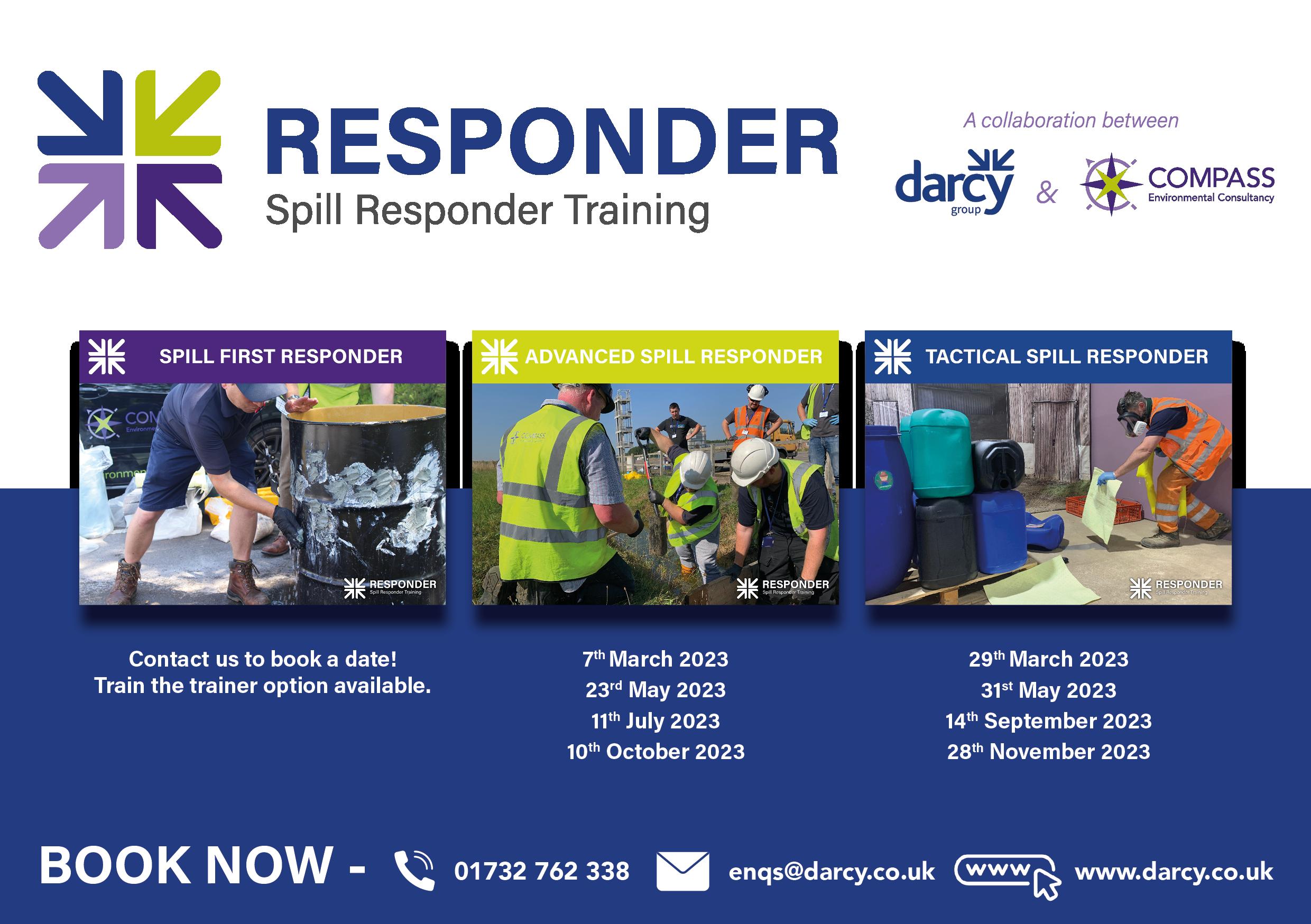

Reduce
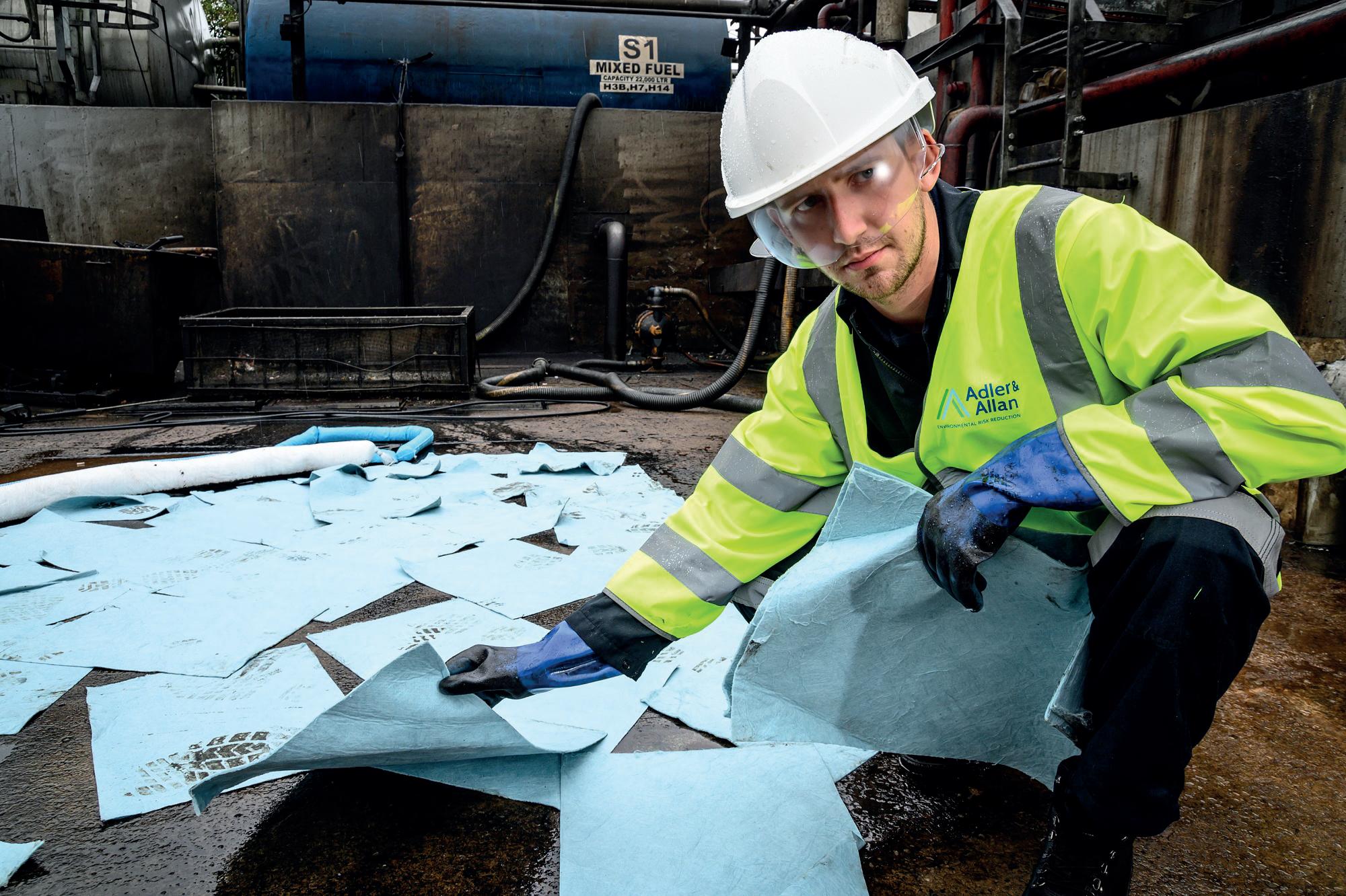
Consultancy
Auditing, diagnostics and testing
Fuel and compliance
Installation and maintenance of fuel infrastructure, hazardous electrical, fuel and quality
Environmental services
Prevention, drainage, tank and waste services
Emergency response
All types of oil, chemical, hazardous, flood incidents
0800
827 adlerandallan.co.uk
592
your cost, risks and remain compliant

Living and working with Parkinson’s: Stephen’s story
When Environmental Technician Stephen Watkins was diagnosed with Parkinson’s in 2021, it changed his life forever. Not only had he been battling with physical symptoms but his mental health also suffered as a consequence, and the impact of the COVID-19 pandemic had a knock-on effect on the time it took to receive a diagnosis and treatment. However, thanks to the support of his colleagues at RSK Group company Ecologia, he has been able to carry on working, and some of the team are even supporting his fundraising efforts by taking part in a charity skydive for Parkinson’s UK!
A life changing diagnosis
Stephen first noticed that something wasn’t quite right back in May 2020, when he was struck down with a severe headache followed by facial numbness. From that point onwards, his symptoms worsened and after a year of fighting for a diagnosis, he discovered he had young-onset Parkinson’s.
“I initially put my symptoms down to stress, especially when they subsided. However, several weeks after I first felt unwell, I noticed my left arm, wrist and elbow joints were sore. After a telephone consultation with my GP, I was told I had carpal tunnel syndrome but my symptoms continued to worsen. My hands were shaking violently, I was unsteady on my feet and driving became difficult. I took some time off but come the autumn, my health deteriorated rapidly and it was becoming obvious to people at work. Deep down, I had known for some time that something wasn’t right but I was trying to work through it in the hope it would resolve itself. It’s a mark of how close we are as a team that my colleagues recognised that I was struggling. I’ve always been perceived as being big and strong and I didn’t want to admit that there were certain things I simply couldn’t do to the standard I wanted. It did, however, force me to face up to the reality of the situation and seek medical intervention.
“Getting a diagnosis proved difficult and this had a real impact on my mental health. An old school friend was able to put me in touch with the neurology department at another hospital, and following an examination and the results of a scan, I was diagnosed with Parkinson’s. I’ll never forget the call. In a space of a few minutes, my life changed forever. I had convinced myself that somehow I would ride it out, but I now knew that I had to learn to accept and live with a degenerative, progressive, incurable neurological disease.”

40
Accepting and adapting to change
Since diagnosis, Stephen has been provided with a support team that consists of a neurologist, a Parkinson’s nurse, a neurophysiotherapist, a personal trainer, a bladder and bowel care team and a wellbeing counsellor. Stephen also has his own local Parkinson’s UK adviser, who is able to offer guidance on everything from financial planning to medication and support groups. His family and friends have been a huge source of strength for Stephen and with the help of RSK and the team at Ecologia, he has been able to carry on working.

Taking to the sky for Parkinson’s UK
Stephen’s openness about his condition has not only helped to educate his colleagues at Ecologia and the wider RSK Group but has also raised vital funds for Parkinson’s UK.
“As well as the benefits it has for my mental health, discussing my condition openly and honestly has meant that my colleagues and managers have developed a better understanding of Parkinson’s disease and are able to make informed decisions on what is safe and unsafe for me to do. It also led to some of the team taking part in a skydive for Parkinson’s UK, which formed part of my fundraising efforts for the charity. All of my care team are trained and part funded by Parkinson’s UK, so it was important for me to show my gratitude and to give something back.
“RSK and Ecologia made generous donations, as did the group’s Chief Executive Officer Alan Ryder and Managing Director of Ecologia, Giacomo Maini. Indeed, the level of support I’ve received from people across RSK has been immense and I am still receiving emails and messages from colleagues all over the world.” Director at Ecologia and Stephen’s line manager Mike Lenn was one of those who took part in the jump.
“I’ve worked with Stephen for several years and have been with him since the start of his difficult journey, right through from those initial symptoms and protracted tests to finding a way forward following his diagnosis. I also have a family member who, like Stephen, was diagnosed with Parkinson’s at the age of fifty, so I have some understanding of the challenges that he is facing.
“While the last few years have been difficult for Stephen, I have huge respect for how open he’s been about his condition and seeking support, even though it hasn’t been without its challenges. Without organisations such as Parkinson’s UK, I don’t think he would be in the place that he is in now, so when he suggested the skydive, I immediately wanted to be involved. It was a great way to not only support Stephen but to raise funds for a fantastic charity.”
“The directors of Ecologia arranged for me to be put on the flexi-furlough scheme, which enabled me to work from home as and when I could. The pandemic was in full swing, and I had no idea what the future had in store for me. I had already begun to write reports, health and safety documentation and cost proposals, so the project managers took the time to teach me how to improve these skills. This kept me involved and less isolated, which gave me a focus other than my health concerns. It also helped us as a family with regard to job and financial security, which was a major concern. RSK and Ecologia provided an occupational therapist to assess my health and needs. These appointments enabled me to discuss my condition with a professional who could feed back to my line manager and HR on how best to support me.
“I was able to successfully apply for an Access to Work grant, which has provided specialist equipment to enable me to work comfortably, both at home and in the office. A phased return was planned as my treatment began and I am now back working on sites and in the office on a risk-assessed basis. All of this has meant I can contribute to the business, keep focused on my future and continue to feel valued. As a result, I have been promoted from environmental technician to project and technical coordinator.”

Another member of the team who undertook the skydive was Environmental Scientist Elisha Salter.
“As someone who’s afraid of heights (and flying), taking part in the skydive was a real challenge. I was extremely nervous beforehand: I’d barely slept and couldn’t eat. Once we were on the plane, there wasn’t really much time to think about what we were about to do before we were out of the door and hurtling towards the ground. The minute of freefall was the longest minute of my life. I was too terrified to enjoy it but was much calmer once the parachute opened up.
“Looking back on it now, it was an incredible, once-in-a-lifetime experience. The views were unreal and I’m glad I can say I’ve done it. I was definitely much happier once both feet were back on the ground though! It was worth every second as we raised over £6000 for Parkinson’s UK.”
Not one to stop pushing forward, Stephen is looking at completing a professional accreditation to enhance his role at Ecologia, as well as continuing to raise money for Parkinson’s UK.
“I think going through this journey has sparked a passion in me for equality, diversity and inclusion (EDI) in the workplace and I’m very lucky that RSK takes this so seriously. I’m looking forward to getting more involved with the group’s employee networks and various EDI initiatives in the future.”
41

Critical Evaluation of the New UK’s LCRM Release: A Step Forward or a Misstep?
Conor Armstrong Director, Avada Environmental Ltd.
More details at:
https://avadaenvironmental.com/2023/08/21/critical-evaluation-of-thenew-uks-lcrm-release-a-step-forward-or-a-misstep/
The Ebb and Flow of the New Release
The UK Environment Agency has recently released the new version of the Land Contamination Risk Management (LCRM) on 20th July 2023. This much-anticipated release has invited attention from all quarters, predominantly, contractors, environmentalists and those affiliated with the remediation of pollution and contaminated land.
However, amidst the flurry of changes and updates, one key update has managed to generate significant discussion and speculation. The document indicates that sections concerned with the “Qualitative assessment of risks in the preliminary risk assessment, Generic quantitative risk assessment, and Detailed quantitative risk assessment” are not tailored to manage newly arising pollution. Instead, these elements focus on providing a risk assessment method to determine if the risk from existing contamination is unacceptable.
This shift in focus, although seemingly straightforward, holds drastic implications for those at the frontline of managing these incidents of pollution, particularly, contractors.
The murky waters of this new change pose the question of standard guidelines – Is there currently an absence of clearly defined standards explaining how comprehensively a contaminated site should be remediated?
Furthermore, it stirs up the debate on the relevance of a riskbased approach versus a pre-loss condition. In other words, should remediation efforts aim at effectively managing identified risks or strive purely for pre-contamination status?
This change seems to impede contractors in understanding the ideal approach for remediating new pollution incidents, creating a potential stumbling block in their operations. That’s where we must pause and ask ourselves – What could this mean for the future of environmental safety management?
42
Diving into the “Common Sense Approach”
As we delve deeper into the changes posed by the new LCRM release, we confront the situation contractors are currently facing – an ambiguous line between risk-based remediation and a pre-loss condition.
Initially, adopting the “Common Sense Approach,” using a risk-based method such as the Land Quality Management’s (LQM) Suitable 4 Use Levels (S4UL) assessment criteria, seems appropriate and efficient. As a booster, this particular method aligns well with the new LCRM’s emphasis on risk assessment. But here’s the paradox – is it sufficient, and more critically, is it universally applicable for all situations?
Unfortunately, the answer isn’t a simple “yes” or “no.” This approach could open contractors aiming for pre-loss conditions to criticism. The dilemma arises as the idea of returning a site to its pre-loss condition might sound comprehensive. Still, the practicality and necessity of executing this are muffled in uncertainty, thanks to the glaring lack of clear guidelines in the new release.
This dichotomy creates a potential predicament – contractors are torn between a sophisticated risk-based approach and the ambitious pursuit of pre-loss conditions without any concrete guidance, a scenario that might detrimentally impact the management of new pollution incidents.
The Way Forward – Scaling the Right Mountain
In the absence of concrete guidelines, it would arguably be expedient to adopt a risk-based approach, even when dealing with new pollution incidents. Prima facie, the rationale behind this notion is quite clear – it’s a tried, tested, and scientifically driven method. The risk-based approach, backed by robust assessment scales like the LQM S4ULs, presents a practical and financially efficient solution. It puts the focus on managing and mitigating unacceptable risks rather than embarking on a potentially Quixotic quest for complete restoration.
Contractors who are striving for a return to pre-loss condition without direct guidelines are arguably “making a mountain out of a molehill”. Pursuing Himalayan-sized tasks when molehills are the challenge at hand can result in an unnecessary drain on resources and may hinder efficiency. While the proposition to revert a site to its pre-contamination state is seemingly ideal, it could thrust stakeholders into bearing unjustifiably elevated costs for remediation processes.
More crucially, such efforts might be unnecessarily exhaustive, primarily when the contamination in question doesn’t pose any demonstrable risk to public health or the environment. Why attempt to rebuild the mountain when mitigating the molehills would suffice for safeguarding public health, the environment, and economic resources all at once?

In summary— the new LCRM release seems to have missed the mark in establishing a clear stance between risk-based remediation and achieving pre-loss conditions. This lack of clarity leaves room for criticism and potential complications.
As environmental challenges continue to grow and change, it remains to be seen how these changes will cater to handling new pollution incidents. What is evident, though, is that the quest for concrete guidelines and practical clarity is both necessary and urgent to ensure the continued protection and conservation of our precious environmental resources.

The essence of risk-based remediation lies in its practical approach and keen perception of actual needs and potential harms. It seamlessly blends scientific understanding, legal requirements, and realistic goals, thereby providing the best possible outcomes without overstretching the resources or causing undue distress. While the revised LCRM may lack explicit guidelines, one thing is clear – adapting, evolving, and aligning our approach is crucial.
As we navigate this changing landscape, embracing risk-based remediation seems the sensible road to travel. Respectful of boundaries, focused on the dangers that matter, and cost-efficient, it helps us not only scale the right mountain but also realize that tackling the molehills might be the more enlightened solution we were seeking.
That way forward lies in taming the mountains…and long may we continue our journey.
43

Navigating the Evolving Landscape of Oil Spill Response

Each year, the risk of oil spills looms large, and the repercussions are growing more severe. What affects one organisation in the oil industry impacts us all. This article delves into the ever-changing world of oil spill response. It explores the complex challenges we face, spotlights emerging opportunities for innovation, and underscores the vital role of collaboration in transforming the industry.
Complex and Evolving Spill Scenarios
For years, the oil industry has been exploring oil in remote regions with limited infrastructure. These areas are often found in less developed and sometimes politically unstable regions with little prior experience in oil spill management. Responding to spills in such remote locations is not necessarily straightforward.
As the search for new oil sources becomes more challenging, the industry’s focus shifts to regions like South America and the African fringe of the Atlantic Ocean. However, the regulators in new basins have a steep and rapid learning curve to reach the point where the country is well prepared for spills. This heightened vulnerability underscores the need for cooperation and proactive measures to learn lessons from elsewhere and minimise risks.
Moreover, the global transition to more sustainable fuels presents new challenges. In shipping, for instance, there’s a move towards using ammonia as fuel. This shift requires collaboration between organisations like The Global Centre for Maritime Decarbonisation and government agencies to establish safety protocols and emergency response procedures.
In any case, it remains true that no two spills are the same, and we’re witnessing an increase in smaller, more frequent spills in different locations, each presenting unique challenges and requiring a unique response strategy. The key challenge now is maintaining a high degree of readiness for the increasing breadth and scale of incidents.
Managing Expectations of Stakeholders and the Public
Both citizen journalists and traditional media play a significant role in shaping public perceptions of oil and gas industry events. Consider two recent spills - one in the Philippines and another in Poole, United Kingdom. The Philippine spill involved a tanker carrying 800,000 litres of industrial fuel oil, which sank. In comparison, the Poole oil spill from a leaking pipe was around six tonnes of crude oil, in 15% oil-85% water mixture. Despite the Philippine spill being significantly larger, the Poole incident garnered more media attention, largely due to UK media coverage and social media uproar from “citizen journalists.” As a result of this intense scrutiny, we are seeing that responses like these have a longer tail - with initially high levels of activity reducing, but continuing at a lower level for a long time after the event.
44
High expectations from the public can lead to negative emotions like distrust, fear, impatience, confusion, and sadness. Unrealistic expectations regarding the type and scale of resources needed for a successful response can worsen the situation. The criteria for defining a “successful response” can vary, with some believing that complete recovery of spilled oil from the environment should be achievable, without the appreciation that hydrocarbons will naturally biodegrade in the environment, or that over-responding can have a detrimental impact on the environment.
These expectations often stem from a lack of understanding of the complexities involved in oil removal or misconceptions about the effectiveness and ecological impact of response methods like dispersants or controlled burning.
In the context of oil spill incidents, different opinions often arise, driven by preconceived expectations, biases, and unreliable information. Unfortunately, objectively assessing these viewpoints is hindered by inaccurate media portrayals, uncontrolled public demonstrations, and the need to make quick operational decisions.
Challenges of Capabilities in Oil Spill Response
In recent years, the energy sector has faced profound challenges, from plummeting oil prices to the disruptions caused by a global pandemic. Simultaneously, despite the promise of higher oil prices and a growing renewables sector, an unexpected challenge is emerging - maintaining the depth and levels of highly experienced spill response personnel.
Several factors contribute to these skill shortages, with one of the primary factors being the departure of experienced professionals from the industry. After enduring years of volatile oil prices, cost-cutting, and pandemic-related upheaval, many experienced workers have left for good, taking their valuable real-world experience with them.
This isn’t a new problem; the oil and gas industry has struggled with talent shortages for years. However, it’s becoming increasingly difficult due to the industry’s
negative perception, driven by climate change concerns and media portrayals. In a 2021/2022 global report by Oil and Gas Job Search and Brunel University, 82% of recruiters reported that 1 in 10 of their open positions had been unfilled for more than three months.
In addition to the talent gap, the oil industry faces persistent scrutiny not only for the occurrence of oil spills but also for the effectiveness and environmental impact of response tools. In a landscape characterised by heightened environmental awareness and increased regulatory oversight, choosing the right response tools has become a focal point of discussion and debate. The negative perceptions of the industry further complicate this decision-making process.
Increasingly negative public perceptions towards anything the industry does, and unrealistic expectations lead to pressure
Mismanagement of expectations can profoundly impact the outcomes of an oil spill, affecting not only the responsible party’s reputation but also financial costs, clean-up efforts, and even the development of new regulatory frameworks. Transparency and engagement are crucial for building public trust and managing expectations effectively. The unfortunate reality is though that oil spills often become political events. When response efforts become distracted by misguided politics, the environment and communities are the losers.
to adopt response strategies that may be more favourable (or less unfavourable) to the media and public, without consideration that there are better options for minimising environmental and community impacts. The industry seeks to address the challenge of balancing trade-offs with the NEBA (Net Environmental Benefit Analysis) process, using tools like SIMA (Spill Impact Mitigation Assessment) to transparently and objectively justify strategy selection.
The question of how to develop and evolve the response toolkit is another challenge. Integrating new technologies like autonomous vehicles and artificial intelligence requires investment, but funds are often directed toward other projects and risks like cybersecurity. Evolving the response toolkit while ensuring readiness to address oil spill incidents effectively is a challenge for the entire industry.
The Critical Factor: Assurance of Credible Capability
Rigorous regulations governing oil industry activities, coupled with safety standards and stringent inspections, form the foundation of spill prevention. In addition to this, comprehensive training programs for industry personnel, along with risk assessments identifying vulnerabilities and guiding targeted mitigation strategies, play crucial roles.
The Tiered Preparedness and Response (TPR) model, outlined in the IPIECA/IOGP Tiered Preparedness and Response Good Practice Guide (2015), establishes a robust framework for oil spill preparedness and response. The model emphasises hav-
ing the right resources in the right place at the right time. However, achieving this seemingly simple goal requires complex coordination and planning to ensure that the provided capability is resilient, reliable, and rigorous.
Successful implementation of the tiered preparedness and response framework depends on the seamless integration of resources across each Tier—Tier 1, Tier 2, and Tier 3. However, factors such as nationalisation, polarisation, populism, and post-truth trends can significantly impede the effectiveness of oil spill response efforts.
Nationalism may hinder international cooperation, limiting the sharing of crucial resources and expertise across borders. In polarised environments, decision-making can get bogged down in partisan disputes, delaying critical response actions and exacerbating spill impacts. Populist influences can skew response priorities toward short-term gains or public sentiment, potentially leading to inadequate or misguided strategies.
Moreover, post-truth trends can erode public trust in accurate information, resulting in confusion and a general distrust of official response communications. The
45
increasing role of artificial intelligence (AI) in shaping narratives adds complexity to the situation. AI-generated narratives, becoming more sophisticated and widespread, have the potential to amplify challenges associated with oil spill preparedness and response. Determining the authenticity and credibility of information becomes more challenging. Educating individuals about effective methods to authenticate information is increasingly crucial, given instances of misinformation spreading across various social media platforms.
The process of scrutinising and validating information is a crucial step. However, the volume of work required to validate information could have direct consequences on response speed and efficiency, introducing unwarranted disruptions or burdensome tasks. Developing and integrating this capability into incident management systems will take time.
A Holistic Approach to Oil Spill and Emergency Management
Oil spills often intersect with natural disasters, extreme weather events, or conflicts, creating complex scenarios that demand multifaceted solutions.
In 2019, the Bahamas experienced a catastrophic oil incident caused by Hurricane Dorian. The hurricane’s extreme winds damaged oil storage facilities, leading to a substantial oil spill. Responding to such situations is challenging, as safeguarding public, employee, and responder health and safety takes top priority. When there are broader threats to human life, like hurricanes, floods, and wildfires, oil spills become a secondary concern. Coordinating oil spill response with humanitarian relief efforts adds complexity to incident management.
In such instances, building and maintaining a robust incident and crisis management capability becomes even more critical. The interplay between these com-
pounding crises underscores the need for a response strategy that addresses complex spill scenarios and integrates seamlessly with broader emergency management protocols.
A comprehensive and forward-looking approach is essential to navigate the intricacies of compounding crises. This approach involves developing preparedness plans that encompass a spectrum of potential crisis scenarios, from oil spills coinciding with hurricanes or earthquakes to situations where geopolitical tensions exacerbate response challenges. By envisioning and strategising for these intertwined crises, response teams can ensure a higher level of readiness and agility, enabling them to adapt swiftly to evolving circumstances.
Resilience takes centre stage in this context, encompassing the ability to bounce back from individual crises and the capac-
Collectively, these factors can disrupt resource allocation, hinder international collaboration, and lead to decision paralysis within response authorities, compromising the ability to mount swift and effective responses to oil spills. The industry must prioritise planning, training, and exercises to navigate political complexities, communicate accurate information, and execute timely actions that transcend partisan divides. This message isn’t new; it echoes the longstanding advocacy of the industry and the long-held position that emergency response is an area where industry collaborates rather than competes. ity to withstand and respond effectively to the convergence of multiple challenges. Building resilience requires a dynamic and adaptable framework that integrates lessons learned from past incidents, innovative technologies, and collaborative partnerships across sectors.
Incorporating the principles of mutual aid into this equation becomes pivotal. Collaborative networks established through mutual aid agreements can provide a crucial lifeline during times of compounding crises. When facing a combination of oil spills and other emergencies, the pooling of resources, expertise, and support from various stakeholders can significantly enhance the response’s speed and effectiveness. These arrangements also foster a sense of shared responsibility and cooperation, contributing to a more cohesive and well-coordinated crisis management approach.

46
The Opportunity: Adapting to an Evolving Industry Landscape
A collaborative approach becomes imperative as oil spill incidents’ complexity and surrounding environmental sensitivities increase. Relying solely on a single company for comprehensive oil spill response capabilities may not be sufficient in navigating the evolving industry landscape.
Mutual aid arrangements foster a network of expertise, equipment, and knowledge-sharing among diverse stakeholders, including government bodies, private enterprises, and community groups.
Cooperative frameworks ensure a more adaptable and effective response strategy that can swiftly address the dynamic challenges of oil spills while also reflecting the changing regulatory, technological, and environmental factors shaping the industry. Some of the benefits include:
Multifaceted Expertise
Oil spills require a wide range of expertise, including technical, environmental, regulatory, and logistical knowledge. Collaborative alliances bring together experts from diverse fields, enabling a more holistic assessment of the situation and a more informed response strategy. This collective knowledge enhances the effectiveness of response efforts and provides diversity of perspectives leading to better outcomes. Shared Resources: Responding to an oil spill demands significant resources, such as equipment, personnel, and funding. By forming cooperative agreements, participating entities can pool their resources
and share the burden, ensuring that the response efforts are adequately supported and that critical assets are distributed where they are needed most.
Rapid Information Exchange
In the digital age, timely and accurate information is crucial for managing crises. A cooperative framework fosters transparent communication and information sharing and processing among participating organisations, enabling real-time updates on the spill’s progression and the effectiveness of response measures. This information exchange allows stakeholders to make informed decisions promptly.
Regulatory and Environmental Variability
The regulatory landscape surrounding oil spills can vary widely across different jurisdictions. Additionally, environmental conditions can influence the appropriate response strategy. Collaborative alliances accommodate these variations by bringing together representatives from different regions and backgrounds, ensuring that response efforts align with local regulations and ecological conditions.

Long-Term Preparedness
By establishing pre-existing collaborative agreements, stakeholders can lay the groundwork for a coordinated response well before a spill occurs. This proactive approach enhances preparedness and reduces response time, leading to more effective containment and mitigation efforts.
Take Australia and Asia Pacific as an example, a diverse region with many good examples of mutual aid such as the AMOS plan, the Petroleum Industry of Malaysia Mutual Aid Group (PIMMAG) and the South Pacific Regional Environment Programme and the new Joint Industry Operational and Scientific Monitoring Plan Framework in Australia. The recent UK MAFA, launched this year, was developed in a collaboration between the OEUK ACTIV task group, OEUK members from the Wells Forum, and the Oil Spill Response Technical Group.
The GOWRS project is another example of collaboration supported by both industry and the specialist organisations involved. The ten-year project resulted in the launch of the Global Oiled Wildlife Service in 2022.
However, getting such agreements in place is only the start; making them effective requires ongoing testing of their functionality in the event of an oil spill.
Envisioning a Collaboratively Transformed Industry
The evolving landscape of oil spill response offers a unique and timely opportunity for transformative change. As the industry navigates shifts in technology, regulations, and environmental awareness, we can draw parallels between this transformative process and the broader energy transition reshaping our global energy mix. Rather than adhering to traditional, siloed approaches, embracing a collaborative response model can be the catalyst for driving change, adaptation, and innovation within the oil spill response sector.
This collaborative approach involves forging solid partnerships among government agencies, oil companies, research institutions, environmental organisations,
and local communities. By pooling their expertise, resources, and insights, these stakeholders can collectively tackle the challenges presented by oil spills more holistically and effectively. Cross-disciplinary collaboration enhances the speed and efficiency of response efforts. It fosters the development of novel technologies, methodologies, and best practices that can significantly mitigate the ecological and economic consequences of spills.
Furthermore, this collaborative model aligns with the increasing emphasis on corporate social responsibility and sustainability within the oil and gas industry. By engaging with a diverse array of stakeholders, these companies can build trust,
enhance their reputation, and demonstrate their dedication to minimising the impact of oil spills on both local ecosystems and global climate goals.
In the larger energy transition context, adopting a collaborative response approach to oil spills displays a readiness to adapt and evolve—an essential quality in an era of rapid change. Just as the energy transition necessitates embracing renewable and cleaner energy sources, the oil spill response transition calls for embracing interconnectedness, shared responsibility, and innovative thinking. In this way, the oil spill response industry can transform the narrative of oil spill response and embrace a future that prioritises preparedness.
47
UK and Ireland Spill Association Marine Spill and Plastic Pollution Conference on 11 and 12 June 2024
The UK and Ireland Spill Association is running a Marine Spill and Plastic Pollution Conference on 11 and 12 June 2024 at the National Oceanography Centre Southampton.
The Conference is focussed on discussing two current dilemmas:
The increasing adoption of less polluting fuels is encouraged by the International Maritime Organisations’ drive to decarbonise shipping by 2050. A consequence of this is that responders are dealing with pollution from spills involving existing hydrocarbon products such as Marine Diesel and VLSFO. At the same time they are expected to prepare to attend fuels involving emerging propulsion fuels such as methanol, ammonia and hydrogen often with LNG/LPG and possibly Li-Ion batteries also involved as alternate means of propulsion.
Concurrently the proliferation of plastic already existing in the marine environment is being added to by increasing plastic nurdle spills which are often into fragile coastal marine environments. These disrupt already delicate marine ecosystems, affects coastal fishing activity, have a long lasting pollution effect and persist in the environment for centuries. The imperative to recover lost nurdles quickly with minimal harm to the existing coastal environment is clear. However little guidance and best practice exists. Our Plastic Pollution Working Group has been developing this over the last 24 months using member experience gained from attending spills in UK waters and overseas. The goal has and remains to provide best practice guidance for ALL who respond to or have a responsibility for contingency planning to ensure environmental protection.
Conference speakers are drawn from experienced response professionals, regulators, manufacturers and academics and are all delivering sessions that aim to share knowledge, inform and stimulate discussion with both the audience in the room but also those who may wish to see the recorded sessions after the conference.
An exhibition accompanies and supports the conference with the aim of providing practical solutions to the topics being discussed in the conference from which some speakers are drawn.
Delegates to the event are drawn from within the response industry, manufacturers, regulators and academia. We also welcome delegates from NGOs active in the fields being discussed at the conference. The aspiration is that by bringing many sectors involved in spill response and plastic pollution we encourage discussion; collaborations that enable solutions to be discussed that may solve the problems that the conference seeks to address.

More details at:
https://noc.ac.uk/about-us
The Conference
The Outline Conference Programme is at:
Sponsorship
We welcome sponsorship of this event and Silver Sponsorship is available at £750 + VAT. This will be primarily used to sponsor the social and networking event which will be a cruise around the Port of Southampton and along Southampton Water.
Join us at the event:
The delegate fee has been kept a low as possible to encourage participation:
UK and Ireland Spill Association member: £125 + VAT
Non-member: £250 + VAT
Exhibit at the Conference
The Venue
The conference takes place over two days and is hosted at the National Oceanography Centre Southampton in the heart of its busy port. It aims to be seen as the world’s most innovative oceanographic institution. It tries to make sense of our changing seas upon which future human prosperity and wellbeing depends. It is an inspiring centre.
During the event there will be opportunity to tour its facilities.
The exhibitor fee is based on a 3m x 3m stand with a power supply, 6ft table, two chairs, wifi and 1 delegate pass:
UK and Ireland Spill Association member: £350 + VAT
Non-member: £700 + VAT
NGO : £350 + VAT
More detail on the event and the current programme are available at: www.ukeirespill.org/marinespillconference
48

Case Study: Oil boom systems for hazardous areas
Vikoma was recently awarded an order for a containerised boom reel system that was for location on an oil jetty. The entire jetty has been designated as an ATEX Zone 1 area and this meant that a standard diesel-hydraulic driven boom reel was not suitable.
Due to the loading / unloading operations with tankers alongside the entire jetty can be designated as a hazardous area.
It is typical for oil containment boom systems to be located on the jetty to allow for rapid deployment to contain any spill if there is an accident or equipment failure.
As the jetty is designated as a hazardous area it does not allow the use of standard diesel-hydraulic boom reel systems.
Vikoma solution:
Our solution is an ATEX Zone 1 electric powered boom reel.
This is housed in a curtain sided 10’ ISO container with the boom reel controls integrated into the end door to allow the reel to be operated with this door open or closed.
The curtain side allows the container to be located close to the jetty edge thereby making effective use of the available space.
Controls
Lever operated control valve (deploy/ stop/recover). Valve is pressure compensated and has integral pressure relief and shock valves. Relief valve setting is 140 bar, shock valves 150 bar.
The boom reel is designed, manufactured and certified for operation in an ATEX Zone 1 hazardous area. It is powered by an onboard electro-hydraulic powerpack (EHPP) that is fitted with a local control panel (LCP)
Motor Power: 7.5 kW
Supply: Multi voltage, 3 phase, 50Hz. ATEX Zone: Suitable for Zone 1, Category 2 operation.
The reels are often housed in ISO containers for storage and protection.
Space on a jetty is often small and this can lead to the reel / containerised reel system needing to be placed close to the edge with limited space in front of it for deploying and recovering the boom.


LCP:
Electrical Controls Local Control Station with lamps, push buttons, DOL starter. High hydraulic oil temperature shutdown (via switch). Low hydraulic oil low level shutdown (via switch). Motor winding overtempt (thermistor).
The design concept of the unit is plug and play and requires the customer to just wire it to their power supply.
The container is supplied with ISO swivel locks so that it can be locked down to the jetty, thereby allowing for quick and easy installation.
The reel can take a wide variety of boom up to 2m overall height.

Container and reel can be painted in a variety of colours to match customer requirements.
There are hundreds of loading / unloading jetties around the world and tightening legislation and enforcement is leading to review of equipment located on these jetties.
This equipment allows for safe and certified operation in an ATEX Zone 1 hazardous area.
Boom reel controls: Located under a high visibility weather cover.
49
New Members
T1 Solutions designer & manufacturer of FoamFlex
FoamFlex (FF) is a patented technology, highly effective in removing oil from water. “Comparison with polypropylene shows superior performance of the FF both as regards the absorption capacity and the possibility of reusing the material after squeezing. Economic considerations also show advantage in economic terms, related not only to the greater absorbency, but especially to the possibility of reusing the adsorbent material (up to 200 times), unlike the PP, and recovering the spilled product unaltered. This leads to the dual benefit of a considerable reduction in the quantity of product to be disposed of and the possibility of economically valorising the recovered oil.” Journal of Environmental Chemical Engineering https://www.sciencedirect.com/ science/article/abs/pii/S2213343723021255]
FoamFlex is a cost-effective and environmentally-friendly solution for oil spill. The reduction of special waste, disposed of by combustion, allows for a reduction in CO2 emissions of 99.8% according to LCA.
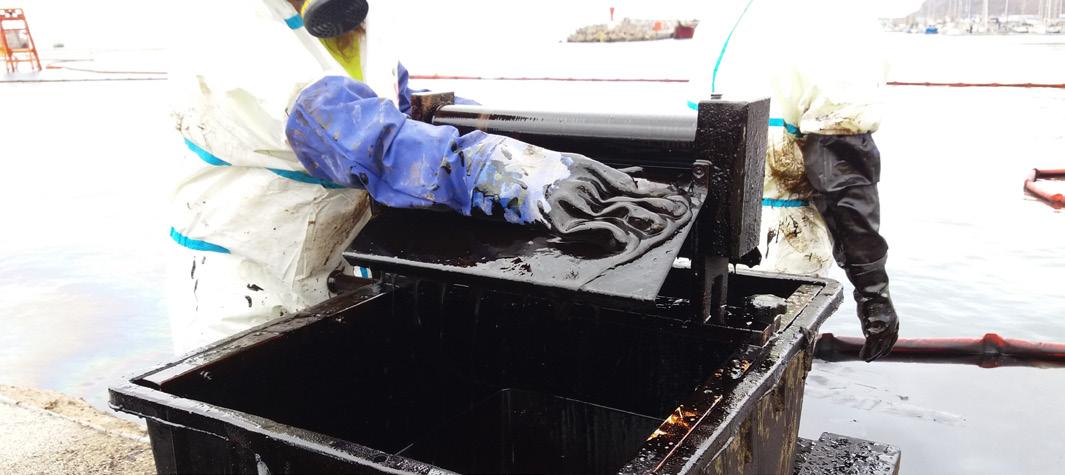
“In a heavy contamination of the harbour area by marine diesel, hydraulic oil, and fuel oil, 20 kg of FF was applied by an inexpe rienced team. The FF was able to remove 57 tonnes of hydrocar bons in three days. The oil removed had a water content of about 5% v/v, which allows direct reuse in a refining process and elim inates further treatment steps.” Journal of Marine Science and Engineering https://www.mdpi.com/2077-1312/10/10/1369]
FoamFlex has been tested at OHMSETT (U.S.) thanks to the sup port of British Petroleum and NZTC.
Visit us: https://t1.solutions/en/
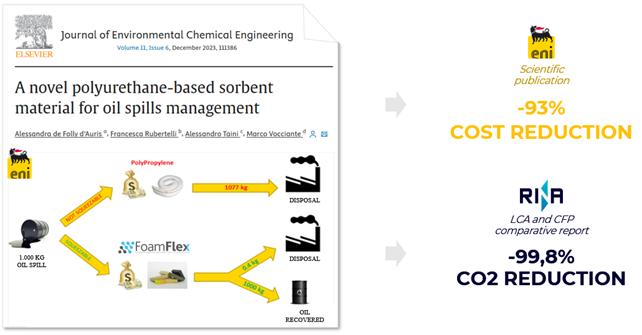
Leviathan Incident Management
With over 20 years experience as General Manager and Director of Oil Spill Response Ltd, Rob has been responsible for the safe and successful delivery of over 300 incident responses in his time. Rob has an intimate knowledge of the industry and what it takes to manage in a crisis. This included the management of OSRL’s response to Covid-19; reassuring all stakeholders of OSRL continued ability to respond during this crisis.

Rob overhauled OSRL’s recruitment and training processes to make OSRL employees respected professionals who are sought out across the industry. He was responsible for the development and implementation of an Approved Competence Management System which is accredited by OPITO.
50
Rob led the project team that developed the first jet aircraft wide area dispersant delivery system, based on a Boeing 727 platform. He negotiated multiple challenges in licencing and permitting to bring the project to fruition.
As the Chairman of the Interspill conference and exhibition over a four conference cycle, Rob has developed vast networks across the incident preparedness and re-
sponse communities. Rob has ensured that each edition of this major triennial event has offered content and insight at the cutting edge of the industry.
Rob is now bringing this experience and insight to support clients in all aspects of crisis management, emergency response and incident command.

Visit us:
https://www.leviathanincidentmanagement.com
Trinity Environmental Ltd
Trinity Environmental, is a multi-disciplined remediation contractor offering building services to various clients including, insurers, loss adjusters, environmental consultants, and private individuals. Trinity Environmental was established in 2020 and specialises in remediation, which involves the removal or containment of pollutants or hazardous materials from a site.
As a remediation building contractor, Trinity Environmental plays a crucial role in addressing environmental issues, providing services such as emergency response, containment, cleanup, and restoration, working closely with associated businesses within the industry. Given their multi-disciplined nature, they have expertise in various areas related to environmental remediation and building services.
Trinity Environmental prides itself on clear communication, honesty and integrity. These values are crucial in their commitment to delivering quality services.
Fuel Spill Digester
Fuel Spill Digester is revolutionising how we tackle fuel spills, offering an environmentally safe and biodegradable solution surpassing traditional clean-up methods. With its unique formulation and advanced technology, Fuel Spill Digester effectively breaks down spills of fuel, oils, and solvents, ensuring a safer and more efficient clean-up process.
Fuel Spill Digester employs a powerful combination of enzymes and friendly bacteria to address fuel spills effectively. The enzymes work by breaking down the hydrocarbon molecules found in fuels, while the bacteria consume these hydrocarbons through the biochemical process known as the Krebs Cycle.
This natural process produces water and trace amounts of carbon dioxide, rendering volatile fuels, solvents, and oils non-flammable and biodegradable within minutes.

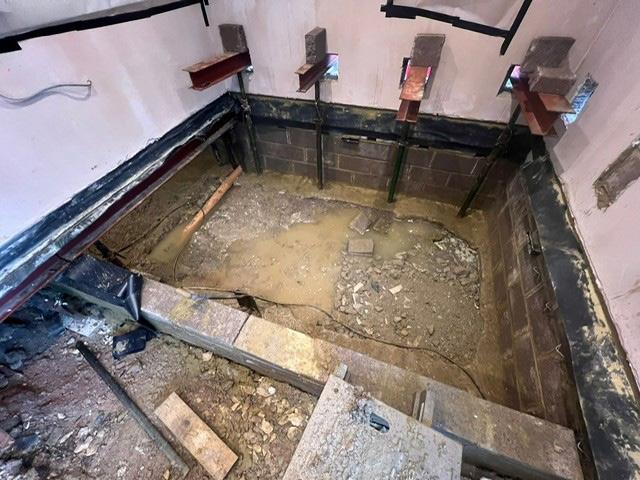
More details at: http://www.trinityenvironmental.co.uk/
It is non-flammable and biodegradable, eliminates the need for absorbents, leaves behind a non-slip surface, eliminates unsightly sheens that often accompany fuel spills and is designed to be environmentally safe and biodegradable.
It is easily applied using a 1:10 ratio when mixed with water using a trigger operated sprayer or a back packed pumped sprayer. Various trials have been conducted in particular by Highways England and is recommended in the Considerate Constructor Scheme Best Practice Hub: https://ccsbestpractice.org.uk/entries/fuel-spill-digester/
More details at: https://www.fuelspilldigester.com
51
2024 Events Programme
The Association runs a number of events throughout the year. These consist of webinars that are available and booked through Eventbrite.
We are holding a Marine and Plastic Spill Event in June, and have our Annual Conference and Awards in November. We have partnered with Corporate Member Socotec to run an Invitational Environment in June. We also hold Regional
Networking Events (subject to member demand). We also attend national events and this year will attend ChemUK Expo in May and Contamination and GeoTech Expo in September.
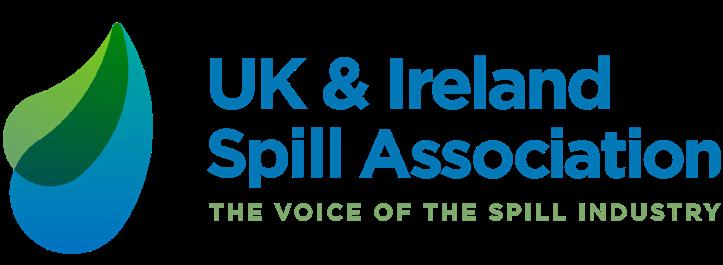
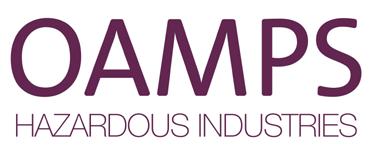
To enquire about any specific event contact: info@ukeirespill.org
If you look in https://ukeirespill.org/latest-news/ you will also find information on specific events and look out on linked in to see notification of webinars.
https://www.chemicalukexpo.com
https://conference.ukeirespill.org
UKEireSpill/Socotec
Contamination and Geotech Expo.
UKEireSpill Inter-Company Go Kart competition
UKEireSpill Annual Conference and Awards Dinner
SOCOTEC House, Bretby Business Park, Ashby Road, Bretby Burton-on-trent DE15 0YZ
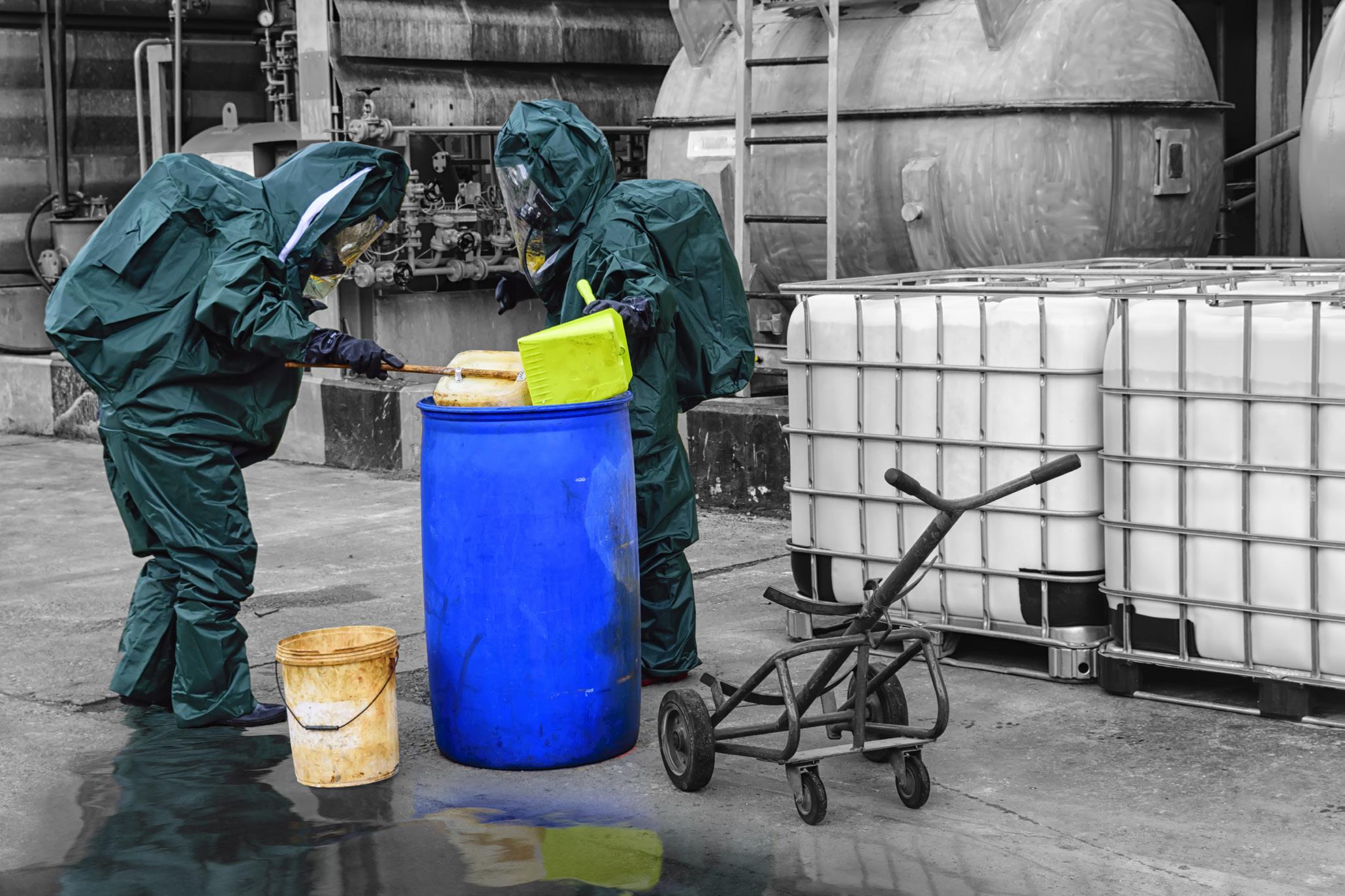
https://www.ess-expo.co.uk/five-shows/clr
TeamSport Go Karting Nottingham (as 2023) Marriot Belfry Nottingham (as 2023)
SPILL RESPONSE INDUSTRY INSURANCE SPECIALISTS Our policies have been evolving since 1986 and can provide cover for: • Bespoke tanker/vacuum units with values up to £500,000 and beyond • Business Interruption losses if your vehicles are unusable after being damaged at your premises • Pollution both on and off the highway arising from your own vehicles • Defence Costs for Directors in respect of Pollution claims against them CONTACT US 01372 869 700 team@oamps.co.uk www.oamps.co.uk Insurance Managers for UK and Ireland Spill Association Ltd & International Spill Accreditation Scheme Ltd OAMPS is part of Pen Underwriting Limited which is authorised and regulated by the Financial Conduct Authority (FCA number 314493). Registered Office: The Walbrook Building, 25 Walbrook, London EC4N 8AW. Registered in England and Wales. Company Number: 5172311 52
Date Event Location 15 & 16 May 2024 CHEM UK Expo NEC Birmingham Marine Spill and Plastic Pollution Conference, National Oceanography Centre, Southampton
Invitational Environmental Event
Birmingham
NEC
11 & 12 June 2024 11 - 12 Sept 2024
Nov 2024 7 Nov 2024 29 June 2024
6











































 Frands Pilegaard Jensen of DESMI - our go kart champion of 2023
A very motley gang of boy racers!
Nicola Harries of CL:AIRE
Frands Pilegaard Jensen of DESMI - our go kart champion of 2023
A very motley gang of boy racers!
Nicola Harries of CL:AIRE












 Grande Europa pictured May 15, 2019 in the Mediterranean Sea after fires broke out in two of the vehicle decks. Photo: Salvamento Maritimo.
Grande Europa pictured May 15, 2019 in the Mediterranean Sea after fires broke out in two of the vehicle decks. Photo: Salvamento Maritimo.


 The MV Grande America on fire in the Bay of Biscay, March 12, 2019. Photo: Maritime Prefecture Atlantic.
The MV Grande America on fire in the Bay of Biscay, March 11, 2019. Photo: Premar Atlantic.
The MV Grande America on fire in the Bay of Biscay, March 12, 2019. Photo: Maritime Prefecture Atlantic.
The MV Grande America on fire in the Bay of Biscay, March 11, 2019. Photo: Premar Atlantic.





















































